
Morocco’s history & culture are rich. Its people are warm & welcoming. The landscape is beautiful & incredibly varied – sandy beaches, busy fishing ports, verdant farmland, olive & cork tree groves, rugged mountains, earthen desert oasis towns built along palm-lined river plains, and Sahara Desert sand dunes.
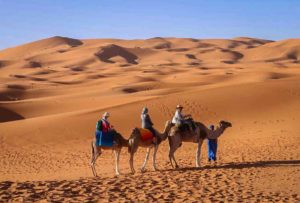
I traveled with Overseas Adventure Travel (OAT) on their Morocco Sahara Odyssey tour. The trip was great, and it allowed my group of 14 friends to see & experience the best of what Morocco has to offer. So, let’s get on with the show…
In this blog post/travelogue, I will share highlights from each of our destinations as we traveled all around the country. (see map) My experience will give you a great idea of what makes Morocco so special – and why you should put this country on your Travel List!
I also heartily recommend every place we visited & the different activities that we did – they were all so unique. Yes, some of the drives were long (as Morocco is a big country!), but the stunning scenery kept us entertained.
In my pre-trip “I’m Off to Morocco” blog post, I shared interesting background information about Morocco & the OAT Tour, so you may want to check that out.
Here’s the destinations I will cover (in this order):
- Chefchaouen – The Blue City
- Rabat
- Fez (aka Fes)
- Volubilis & Meknes
- Sahara Desert Experience
- Ouarzazate / Ait Ben Haddou
- Marrakesh
- Essaouira
- Casablanca
Chefchaouen
Wow, what a perfect place to start our exploration of Morocco. Set in the beautiful lush scenery of the Rif Mountains in northern Morocco, this aptly-named “Blue City” was a total charmer! We all agreed Chefchaouen was one of our favorite towns.
- Credit: Ed Lofdahl
Chefchaouen’s main activity for visitors is leisurely wandering the peaceful cobbled lanes of the medina (old town), soaking up lovely views of the many blue-washed buildings, in every shade imaginable. And a special treat for cat lovers like me – this town is awash in adorable kitties who practically “own the streets!”
Approximately 18,000 people live in the old medina, with a total of 40,000 in the whole town. We stayed in a lovely hotel just outside of the medina, with fabulous views of the Blue City cascading down the mountainside.
We enjoyed an excellent 3-hour guided tour of the medina with Abdeslam our first morning. After getting oriented, we happily wandered on our own the remainder of our two days there.
The only “negative” was the unexpected rainy weather, but we didn’t let it dampen our spirits or our exploration – although we had to cancel a long hike planned for the following morning. In fact, the storm front brought not only cold & rain, but it snowed in the mountains just above town. (photo above)
Plus, as we were walking to dinner one night, it actually hailed on us! However, the pure novelty of this just made us all giggle. We later learned that the Atlas Mountains in the other part of Morocco got heavy snows around the same time – almost 2 months earlier than the norm.
As you can see by the photos, Chefchaouen really is a magical place. I won’t say much more for now, because I plan to write a whole blog post just on Chefchaouen – which is becoming the new “hot” destination in Morocco! So stay tuned…
Rabat
We began our formal OAT tour in Rabat, Morocco’s capital & a vibrant modern city. Rabat has been heavily influenced by its time as a French Protectorate (1912-1955). This city of one million lies on the Atlantic coast, an hour north of Casablanca.
Rabat is where we met up with our fabulous OAT Trip Leader, Aziz Goumi who would guide us around Morocco for the next 2+ weeks. Turns out, Aziz grew up in Rabat & still lives there, so he proudly showed us “his city” on a half-day sightseeing tour.
- Royal Palace – Entrance
- Credit: Ed Lofdahl / OAT Tour Leader Aziz
We first visited the Royal Palace. Morocco’s current king, Mohammed VI, ascended to the throne in 1999 after his father Hassan II died. Now age 55, he’s well-educated, progressive, and generally well-liked. However, not being royal visitors, we could only view the palace exterior.
We then took a long walk around the Chellah, an historic fortress with beautiful gardens (where Aziz stealthily played as a kid!). Plus, it has well-preserved Roman ruins, and those of an Islamic mosque & madrassa (school). The Chellah is also one of Rabat’s venues for the 9-day “Mawazine” Festival, said to be the world’s 2nd largest music festival. Put that on your list!
Next stop: Hassan Tower (above) – a very picturesque sight. It’s the minaret of an unfinished mosque from 1195. At that time, the tower & mosque were intended by the sultan to be the largest in the world. Today, the ruins still remain, serving as the city’s proud icon.
Adjacent to Hassan Tower, with ceremonial guards on horseback at the entrance, was a beautiful royal Mausoleum (above right). From an inside 2nd level balcony, we could look down on the tomb of Mohammed V, the current King’s grandfather, plus the King’s father & uncle. It sure pays to be royalty!
We finished with a short walk through the Kasbah of the Udayas, an old fortress built in the 12th century. It became a residential area over time – and is located at the mouth of the Bou Regreg River as it flows into the Atlantic Ocean. Today, the Kasbah’s tiny lanes contain homes, cafes and shops, with many buildings painted blue – a little Chefchaouen-esque.
That evening, we were treated to a delicious Welcome Dinner at the lovely Dinarjat restaurant in the old medina. Upon opening a large wooden door, we entered into a Moroccan “Arabian Nights” wonderland with magical blue mood lighting.
- Credit: Deborah Deshais
The restaurant’s beautiful covered courtyard, filled with tables, was adorned with tall columns, Arabic arches, colorful ceramic tiles, and a fountain. And the meal was equally rich. The first course offered different choices of cooked Moroccan appetizers & vegetables and the main course was stuffed peppers with beef.
The meal ended with a decadent dessert & high-poured mint tea. This was all a clear sign that we would be eating really well throughout the whole trip – and yes, that turned out to be very true! The Moroccan food was delicious & varied!
Fez (aka Fes)
Oh, boy, where do I start telling you about fascinating, oh-so-exotic Fez? Perhaps, with the fact that it is the oldest of Morocco’s four Imperial Cities. It was first established as a capital city in the 9th century, under Sultan Idriss II, a great-great grandson of the Prophet Muhammad (the founder of Islam).
Fez is where we had our first riad stay – a type of lodging that is uniquely Moroccan. Riads are stately city homes that have been converted into elegant, boutique hotels. They are usually multi-storied with Andalusian-style courtyards, beautiful tilework and calming fountains.
The Riad Palais Marjana was our lovely home for three nights. This 17th C. home had belonged to the woman owner’s grandfather. After 3-4 years of renovation, their 16-room family-run riad opened in 2017. It’s located just inside the medina walls, so we had a 5-minute walk from our bus. Plus, our luggage was brought in by local men with push carts (the norm in car-free medinas).
Our first afternoon, we took a drive to a hilltop fortress from where we could gaze down at the sprawling city below. It gave us a great idea of the immensity of the old medina, which today still houses half a million people! Our guide also pointed out the newer parts of the city, including Ville Nouvelle (new city) built by the French in 1912.
Medina Walking Tour
The next day we had a full-day walking tour of the medina with Mohammed, a wonderful local guide. It’s a good thing because you really can’t navigate a maze-like medina like Fez on your own. You’d be lost for days – okay, an exaggeration, but surely for hours! Plus, a good guide knows how to show you all the best sights in your limited time there.
- Credit: Alan Knapp
- Fez’ famed Blue Gate – entrance into the medina
As mentioned, the “old” medina in Fez dates from the 9th century. However, we started our tour in the old Jewish quarter (the Mellah). This “new” medina dates from the 14th century! Mohammed told us that in the overall medina there are 320 mosques, 25 synagogues and 7 Koranic universities. Wow!
We spent most of our time exploring the “old” medina where there was lots of hustle & bustle. It was so much fun walking the crowded narrow streets, dutifully following Mohammed, and taking in all the exotic sights and sounds of everyday medina life.
Not surprisingly, Fez is the world’s largest car-free urban area in the world! However, you still need to watch out for donkey carts & other forms of transport rushing by.
There were so many colorful shops selling everything imaginable. The medina’s different market areas are called souqs, and often specialize in a particular type of handicraft or product like clothing, spices, woodworking, or brass items. And, the many artisans are right there too, skillfully creating their craft.
We also toured the historic Medersa al-Attarine, a Koranic school built in 1325. It was fun to envision what life would have been like for the 60 students living & studying there. It was richly decorated, with a rectangular arcaded courtyard and beautiful zellige (colorful geometric mosaic tilework), carved plaster and cedar wood. (below)
- Photo on Left: Credit – Alan Knapp
We enjoyed a delicious lemon chicken tagine lunch at the Restaurant Najjarine, with another beautiful interior. Typical in medinas – you would never know from the street what gems lies behind closed wooden doors! Afterwards, we headed off to visit the leather tannery, which I had really been looking forward to.
- Credit: Alan Knapp
Chouara Leather Tannery
Fez is famous for its leather products & home to three ancient leather tanneries. The largest is the Chouara Tannery, built in the 11th century. Looking down from rooftop terraces, you are able to view large stone vats filled with a wide array of colored dyes and white liquids for softening the hides.
- Credit: Alan Knapp
There, you can also see male workers busy tending to the hides soaking in the vats & others scraping away excess hair and fat on the hides after they’ve been softened. This is all done manually, and the process has barely changed since medieval times. Of course, this is what makes it so interesting – not to mention photogenically fabulous!
We entered through the Sisi Moussa leather shop, where we were led up to their terrace for a quick tour & viewing. We were given sprigs of fresh mint to hold under our nostrils to help lessen the stench. Luckily, I don’t have a good nose, so I didn’t find it too bad.
Very soon, the group was led back downstairs so they would have time to shop from the huge array of colorful leather goods, including jackets, purses and shoes. In fact, two of our group did purchase beautiful leather jackets made out of goatskin, which is the softest of the hides (along with lambskin). I will confess that I stealthily stayed up on the terrace the whole time to take more photos of this amazing scene.
Near the day’s end, we made a short visit to a weaving shop. Following a demo of their offerings, staff members quickly & expertly wrapped each of our group in different Saharan styles of head scarves for a very fun group photo. That did the trick – I bought a deep blue scarf, made out of agave cactus silk, to take with me to the desert.
Moroccan Hammam & Chicken Pastillas
After our busy day of touring, I was excited to experience my first Moroccan hammam (Turkish-style bath). My friend Lynn & I had booked a 4 o’clock appointment at our riad, so we headed upstairs to their 2-person sauna room (hammam). It had two heated marble slabs with a comfortable mat atop wooden slats on which to lie – fully naked!
For the next 45-minutes, our lovely hammam ladies (mine was Fatima) worked away, constantly rinsing us with small buckets of hot water. They first washed us and then vigorously scrubbed our bodies – back & front – with their special abrasive mitt for some major exfoliation! At one-point, black clay/mud was rubbed on our face. We ended with our hair being washed and a final rinse with more warm water. Yep, we were definitely squeaky clean!
In addition, we had two of our meals at the riad – a lunch & dinner, both delicious. Our favorite was the chicken pastilla, a traditional Moroccan filo pastry pie. It consisted of a sweet & savory chicken filling, wrapped in layers of very thin dough. Yum! And, it was expertly served by the riad’s adorable Mohammed, who took great care of us.
Excursion to Volubilis & Meknes
Our 3rd day in Fez, we took a full-day excursion to visit the historical sites of Volubilis & Meknes, which were both interesting and worthwhile. And, after six straight days of rain, we finally awoke to clear blue skies – and the Hallelujah chorus playing in our heads!
The scenic drive to Volubilis took 1 ¾ hours, passing through the beautiful agricultural lands of the Saiss Valley, filled with groves of olive trees. Founded in the 3rd century B.C., Volubilis served as the capital of the ancient Berber kingdom of Mauretania. It became an important outpost of the Roman Empire from 1st BC to 400 AD.
Volubilis is a UNESCO World Heritage site because it’s graced with many well-preserved buildings. The site is partially excavated (estimated at 1/3 to 1/2, depending on sources) and archeologists are hopeful of finding a coliseum in there one day! We toured the ruins with Abdul, an excellent local guide.
Volubilis contains many fine town homes owned by wealthy Roman patricians, including one called the “House of the Bathing Nymphs” with lovely mosaic floors (like in most of the homes). We also saw the Basilica, the Forum/Agora, a large stone arched aqueduct, and a splendid Ceremonial Arch overlooking the peaceful valley below. Who would have thought we would be touring such great Roman ruins in Morocco!
Meknes
Our next stop was Meknes, another of Morocco’s Imperial Cities. Founded in the 11th century as a military settlement, Meknes became a capital under Sultan Moulay Ismaïl (1672–1727), the founder of the current Alaouite dynasty. The sultan turned it into an impressive city in Spanish-Moorish style, surrounding it with high walls with great doors.
- Credit: DepositPhotos / Mansour’s Gate
After lunch in Meknes, our touring time was relatively short but enough to get a flavor of the old city. The most famous sight is the magnificent & ornate Bab (gate) Mansour, which is regularly named as one of the world’s most beautiful doors. The Bab looks out onto Plaza Lahdim, Meknes’ large public square – a smaller, saner version of Marrakesh’s Dfemaa plaza, which I’ll tell you about shortly. However, snake charmers could be found at both!
We also visited the Granaries, built by the Sultan adjacent to his Royal Stables (with room for 12,000 horses). The huge complex was designed to store large amounts of food & grains – enough to feed his people & beloved horses for at least ten years!
The Granaries were ingeniously designed with massive walls and a system of underfloor water channels to keep the temperatures cool & air circulating. It’s cool, literally, to walk through the giant vaults – a series of 10 massive rooms with arched ceilings.
- Credit: Alan Knapp
- Credit: Alan Knapp
The complex is partially renovated. Outside, the arches are open-air, as the roof collapsed during an 18th C. earthquake. Lonely Planet recently listed Meknes (population – 600K) as one of their up & coming Top 10 Cities to visit in 2019. The article highlighted cities they believe are primed to capture traveler’s imaginations.
Our Sahara Desert Experience
Our two glorious days spent in Morocco’s Sahara Desert region was clearly a trip highlight for everyone. There were so many fun, unique, and once-in-a-lifetime experiences – including desert camping under the stars & riding camels on sand dunes!
Soon, I will write a full blog post on just the Sahara Desert experience since there is so much to share. But for now, I’ll share some highlights to whet your appetite & give you a taste of what “Moroccan desert tourism” looks like.
Our adventure began in Erfoud (a desert gateway town) where we loaded into four Toyota 4×4 vehicles – which would be our trusty “desert chariots” for the next two days. Eventually leaving paved roads behind, we headed off-road onto both rocky & sandy desert terrain to reach OAT’s private tented camp some thirty minutes later.
And, wow, what a camp! There were 12 sleeping tents, a dining tent, cooking tent, and an open-air lounging thatched hut. The first view inside our “luxury” tents blew us all away! No cots or sleeping bags found here. Instead, there were poster beds with blankets, a vanity sink, toilet & hot shower, plus electric lighting (from a solar-powered generator). Can you see the big smile on my face? This was definitely “glamping!”
From the camp, we had beautiful views of the magnificent Erg Chebbi sand dune in the near distance. Late our first afternoon, we drove to a nearby dune, which we climbed to watch the sunset, while making wine toasts in real glasses. That evening, the stargazing under crystal-clear desert skies was amazing!
We kept busy with lots of different, interesting activities during our 2 desert days:
Visited a local nomad family & had tea with the mom and daughters
- Hunted for fossils in the rocky terrain
- Drove to a remote desert village famed for its Gnaoua musicians – where we enjoyed mint tea & a lively musical performance
- Toured a date palm farm which began in 1985 in the middle of the sandy terrain after hard-working owner Mohammed (now 63) discovered water & dug a well
- Got henna tattoos on our hands & feet (your choice!) by a local woman artist
Camel Ride
However, the crown jewel of our desert experience was the 45-minute camel ride on a beautiful section of sand dunes. For many of us, like me, it was our first camel ride. Some of the group initially thought it might be “hokey,” but the ride turned out to be great fun – and everyone agreed it was downright cool!
- Credit: Alan Knapp
- Credit: Ed Lofdahl
Drive Along Road of the Kasbahs
Leaving the Sahara behind, we headed off to Ouarzazate. Much of the drive was through barren, rocky landscape, occasionally punctuated by green areas of palm groves & other foliage lining mountain-fed rivers. That’s where you would find desert oasis towns like Tineghir (above) & Tinejdad.

Tinejdad –Ksar of El Khorbat
In the oasis town of Tinejdad, we stopped to take a walk inside the Ksar of El Khorbat & visit their excellent Berber Museum. This fortified village, built out of soil (rammed earth) in the middle of the 19th C., was recently restored.
About half the houses are still inhabited & have been modernized inside. You certainly can’t tell from walking through the dark, seemingly deserted streets. But, it’s like so much of Morocco – there’s a lot more going on behind closed doors than meets the eye (in a good way)!
After the museum, we enjoyed a delicious lunch at El Khorbat restaurant next door, which also runs a 10-room guest house in the ksar. It’s all part of a successful sustainable tourism project working to preserve this & other old ksour.
- Credit: Alan Knapp
Quick Note: Ksour is the plural of Ksar, which is a walled town protected by watchtowers. Kasbah seems to have different meanings, depending whom you ask. Kasbah can mean a square building, usually the home of a powerful family, with four towers at the corners. However, often entire towns are considered kasbahs and not just a single building.
Generally, these ksours (or kasbahs) look like mud castles, in many shapes and sizes, with walls made of layered dirt and stone, with high walls and very few windows. They are so characteristically “desert Moroccan.”
Ouarzazate – aka Ouallywood!
Two nights were spent in Ouarzazate, a somewhat cosmopolitan city (population ~ 70,000) with an almost unpronounceable name! (Hint: it sounds close to “Where’s Oz At”). The town serves as a “Doorway to the Desert” & has enjoyed a long connection with global blockbuster cinema.
In fact, two major film production studios are located here (Atlas & CLA). That’s because Ouarzazate offers a wide range of beautiful, rugged landscapes & locations in easy reach. It has been the setting for Lawrence of Arabia (1962), Gladiator (2000), and The Sheltering Sky (1990). Thus, it has cleverly been nicknamed “Ouallywood.”
- Credit: Alan Knapp
On my one free afternoon in town, I made a pilgrimage to the Museum of Cinema, as I had hoped. Housed in a former movie studio, this low-key museum contains an interesting collection of old sets, props, and cinematic equipment.
Ait Ben Haddou – OAT Day in the Life Experience
Ouarzazate is a convenient base for visiting Ait Ben Haddou, a short 30-minute drive away. Ait Ben Haddou is a UNESCO-designated ancient ksar, with the oldest sections dating from around the 17th C. This beautiful massive fortification has been used as a backdrop in countless movies & TV programs, including “Game of Thrones.”
The ksar has become a popular tourist attraction, with countless visitors climbing the winding streets up to the fortified granary at the top for an amazing view. We were told that only five families still live in the old ksar. Apparently, the other 150 families moved just across the river to live in more modern dwellings!
Day in the Life Experience
We spent all our time in Ait Ben Haddou’s “new” village. That’s where we took part in OAT’s Day in the Life program – meeting different members of the local Berber community in a fun & interesting exchange. We first toured a local home owned by Fatma, who graciously showed us around her spacious house (6 people live there) and her small stable with 7 goats & one donkey.
- Credit: Deborah Deshais
We also visited her son Hucine’s nearby art studio for a demo. He paints watercolor desert scenes, using a mix of blue (indigo), yellow (saffron), and brown (tea with sugar). It was fascinating to watch the translucent, almost invisible brown pigment appear ONLY after he held the painting over a small flame. In fact, this “Berber fire painting” is common in the village so you can bet I bought such a unique piece of artwork!
We took a quick walk through some of the town’s agricultural fields, stopping to help two local men who were picking olives. After a mint tea break, we headed off to the local women’s association – Imik Smik – that the Grand Circle Foundation (& OAT) help support.
- Streets of the new village looking at old ksar
Imik Smik Women’s Association
Founded in 2012, Imik Smik (“Step by Step”) now has 43 members (ages 16-77 years). The women are currently focused on baking cookies & making couscous to sell to local restaurants and for special events (like weddings). That day, our lovely hosts were shy 30yo Zahara & fireball 23yo Haria. She spoke decent English & excitedly told us all about their plans – with a little translation help by Aziz!
- Entrance to Imik Smik Women’s Association office
Then it was time for group participation, so we learned how to make cookies & couscous (from wheat flour) under the tutelage of these very skilled women. Afterwards, we were invited for a home-hosted lunch by the same women. We were served a chicken tagine that had just been cooked at the association’s kitchen. It was a delicious ending to a perfect “day in the life”!
Marrakesh
Following a scenic 5-hour drive up & over the spectacular High Atlas Mountains, we arrived in Marrakesh. After the relative quiet of the remote desert region, it was quite the culture shock. Marrakesh is a large, vibrant, in-your-face city with lots to offer the huge volume of tourists it attracts each year.
- Credit: Alan Knapp
- Credit: Alan Knapp
Like Fez, Marrakesh has a bustling & labyrinthine medina with amazing shopping opportunities – for whatever your heart desires. The immense Djemaa el Fna, Marrakesh’s main square, leads into & out of the medina’s many streets & lanes.
- Credit: DepositPhotos
- Credit: Alan Knapp
As billed, the Djemaa el Fna square has a non-stop carnival atmosphere, attracting hordes of locals & visitors alike. Day or night, you’ll find street performers, including talented Gnawa musical groups. There are snake-charmers (whom I avoided like the plague), astrologists / fortune tellers, and henna ladies all vying for your attention!
- Credit: Alan Knapp
- Credit: Alan Knapp
Early one evening, Aziz walked our group through the square, so we could experience the night-time madcap scene. There were many food stalls – both fruit stands making fresh juices & meat grilling stalls with clever & entertaining hawkers. We loved one of their enticing refrains – “Eat Here, No Diarrhea!” Yep, it was a fun Moroccan style circus!
Our hotel was conveniently located just one block from the Koutoubia Mosque with its beautiful, tall minaret – an iconic landmark of the city. Plus, the minaret was very helpful for getting your bearings. There’s a lot to see & do in Marrakesh, so we kept busy during our 3 nights, 2 ½ days here.
Sightseeing in Marrakesh
We enjoyed a sunset carriage ride on traditional horse-drawn caleches through the streets of Marrakesh – starting in the old medina & ending in the newer, French district.
- Credit: Alan Knapp
We visited a herboristerie (spice shop) to learn about the different spices like saffron, cumin, jasmine, eucalyptus, and the much touted argan oil – made from kernels of the argan tree only found in Morocco!
We toured the lovely Bahia Palace, an opulent 19th C. palace built by a grand vizier of the sultan. It is empty of furnishings, but what remains is classically elegant Moroccan architecture – beautiful zellige tiled floors, walls & fireplaces; intricately carved stucco walls; and the most amazingly carved cedarwood ceilings.
- Credit: DepositPhotos
- Credit: Alan Knapp
We also paid a visit to Majorelle Garden, created by the French artist Jacques Majorelle – which was completed over 40 years, starting in 1923. In 1980, Yves Saint Laurent & his partner Pierre Bergé bought the garden, which they lovingly restored, plus the villa painted in the deep, luscious Majorelle blue. The painter’s studio became an excellent Berber museum.
- Credit: DepositPhotos
- Credit: Alan Knapp
After touring the beautiful gardens & the museum, we headed down the street to the Yves Saint Laurent Museum devoted entirely to the work of the legendary fashion designer who died in 2008. Not being a fashionista, I honestly didn’t know much about YSL, but it was fascinating! Turns out, YSL had a long love affair with Marrakesh, which served both as a second home & his creative muse.
We also ate very well in Marrakesh, a city filled with great restaurants. A couple nights, I joined friends at highly-recommended restaurants within the medina. Both served very good food, and each had a terrific ambiance. You can’t go wrong at either: Dar Cherifa and the Nomad Restaurant.
La Mamounia Palace Hotel
With my friend Alan, I paid a brief visit to La Mamounia, the city’s famed & uber-luxury hotel. Set on a former royal estate dating from the 12th century, this palace hotel opened in 1923 – and includes nearly 20 acres of public gardens. What a fascinating glimpse into lifestyles of the rich & famous!
- Credit: La Mamounia
- Credit: Alan Knapp
La Mamounia’s architecture & sumptuous interiors are absolutely stunning! As you might imagine, many famous people have stayed here over the years – with Winston Churchill probably the most renowned. In 1943, Churchill called Marrakesh “the most lovely spot in the whole world!” And with his paintbrush, he loved to capture the city’s famous sunsets from his hotel balcony.
When checking out La Mamounia’s website, you may note the asterisk*: “An elegant dress code is required in all public areas.” (Oops, lucky I got inside!). However, if you ever get the chance, dress yourself up & go there for lunch on the terrace to get your own taste of the “royal life” – as my friends Debbie & Christa did!
Pickpocketed in Marrakesh
Unfortunately, I was pickpocketed my final evening in Marrakesh, getting off the bus after our Farewell Dinner. I lost my beloved iPhone, which meant most of my Marrakesh photos were gone (since they had not yet been uploaded to the cloud). In reality, this type of petty theft can happen anywhere (especially around Europe)!
I have written a special blog post about it, entitled: Pickpocketed in Marrakesh – iPhone Gone, Valuable Lessons Learned. My goal is to have you & other travelers learn from MY experience, so you won’t repeat my mistakes. But, please hear me – this is NOT meant to discourage you from visiting Morocco. It is generally a very safe country!
Essaouira
After Marrakesh, four friends & I headed to Essaouira, a lovely town on the Atlantic coast, a few hours south of Casablanca. The core OAT trip didn’t include Essaouira, so we did our own visit & I’m very glad we did!
So, what’s the big draw of Essaouira? Well, this charming, laid-back town has nice beaches, an active fishing harbor, a small, easy-to-navigate medina, and lots of good seafood restaurants. The old city is still partly surrounded by well-preserved walls & ramparts built in 1506 by the Portuguese.
Until the 1960s, Essaouira was known as Mogador, its Portuguese name. The present city was built by a Moroccan king in the mid-18th C. Today, Essaouira is a popular low-key resort town, offering a delectable alternative to frenetic Marrakesh, a 3-hour drive away. Nicknamed “the Windy City,” the town is also known for windsurfing.
Exploring Essaouira
Our 1 ½ days here went quickly, starting with a guided walking tour our first afternoon. With Ahmed, we visited the incredibly picturesque fishing port & strolled the narrow streets of the old medina filled with local markets, cute shops and cafes. We walked to the top of the Skala rampart, for beautiful views of the sea.
That evening, we watched the sunset from the rooftop terrace of Taro’s Café. Then, we enjoyed a delicious fresh seafood dinner at Salut Maroc, while being entertained by an excellent “Gnawa fusion” band.
The next morning, we watched the fishing boats come back into port. An amazing frenzy of activity took place whenever a trawler carrying a fresh catch of sardines arrived. I spent 2 ½ hours enjoying the hubbub of the port until heavy rain finally sent me scurrying.
Unfortunately, with rain forecast all day, my vision of a leisurely afternoon stroll through the streets of the medina was quashed. Instead, I booked an appointment at a nearby riad & spa for a hammam scrub, followed by a massage. It turned out to be lovely!
Meanwhile, Deb & Kim, avid water girls from Hawaii, were able to complete their surfing mission. That morning at Essaouira’s nearby beach, they rented boards & wetsuits and got a full hour of surfing in, showing the young local boys a thing or two! Yep, they certainly earned their “I’ve Surfed Morocco” bragging rights.
- Essaouira’s Charming Old Medina
There’s much more to share, so stay tuned as I plan to write a full blog post on just Essaouira – including the peaceful medina (above) & the fascinating and incredibly picturesque fishing port with all its happenings!
Casablanca
Our wonderful Morocco trip both began & ended in Casablanca, a modern cosmopolitan city of over 3 million – and one with legendary traffic! As the country’s economic & commercial center, Casablanca serves as the international air gateway for most travelers.
Hassan II Mosque
Casablanca’s main sight is the amazing Hassan II Mosque – an absolute must-see! Built right next to the sea on a beautiful plaza, the mosque opened in 1993. Its minaret rises 60 stories high & the mosque is one of the world’s largest. (either #3 or #5).
It’s hard to imagine, but the inside prayer hall can accommodate 25,000 worshipers, while the outside esplanade can hold another 80,000. Plus, Hassan II is one of the few mosques in Morocco open to non-Muslims! We took one of their 45-minute tours which they offer several times a day – for a cost of 120 dirhams (~$12).
- Credit (photo on left): Ed Lofdahl
Hassan II Mosque is architecturally stunning both inside & out. Completed in around 6 years, it serves as a proud showcase of the best of Moroccan artisanship – hand-carved stone & wood, intricate marble flooring, gilded cedar ceilings, and gorgeous zellige mosaic tilework.
- Credit: Ed Lofdahl
Plus, the huge wood-carved ceiling (above, right) is actually retractable – what an engineering feat! On either side of the prayer hall, there are mezzanine floors with carved dark wood screens reserved for the women. (above)
We finished the tour by going downstairs to view the men’s ablution area (above – left), with beautiful marble fountains where the faithful wash before prayers. Walking back out through the expansive courtyard, I took some final photos of the beautiful fountains – to remember this very special place!
Rick’s Café

So, it seemed a visit to “Rick’s Café” on our final night in Morocco would be a perfect trip ending. Turns out, Rick’s Café is relatively new. Many people (like me initially) are surprised to learn Rick’s Café Américain never existed, except on a Hollywood movie lot.
In fact, the current (and only) Rick’s Café first opened in 2004. It was a passion project of a former American diplomat who wanted to recreate the film’s glory days. She & her team have done a beautiful job re-imagining the look & ambiance of Rick’s Café Américain. Here’s an interesting New York Times article about it you might enjoy.
- Credit: Rick’s Cafe
- Credit: Rick’s Cafe
So, off we went to Rick’s for our Morocco farewell dinner. Since we didn’t have reservations, they seated us upstairs in “The Lounge” – a cozy area with a small bar, roulette table (on which we dined!), and a large screen showing Casablanca. Despite Rick’s Cafe being a major tourist attraction, the food was great, service attentive, and prices reasonable.
- Credit: The New York Times / Photographer Ksenia Kuleshova
- Credit: Rick’s Cafe / The Lounge where we ate dinner
And the best part: By sitting in the lounge, I was able to watch half the movie again, including the unforgettable ending. Indeed, my inner romantic so resonates with those great lines: “Here’s Looking at You Kid” and “We’ll Always Have Paris!”
And, yes, I will always have Morocco – and so many unforgettable memories!
COMMENTS: Have you visited Morocco? What were your impressions? If not yet, is Morocco on your travel list?



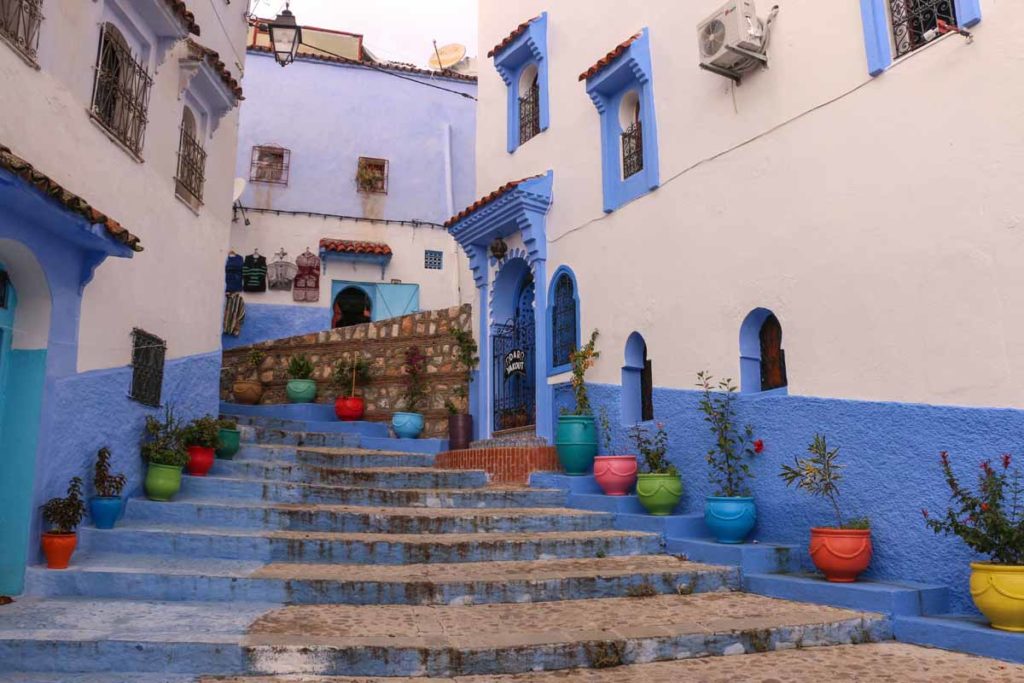

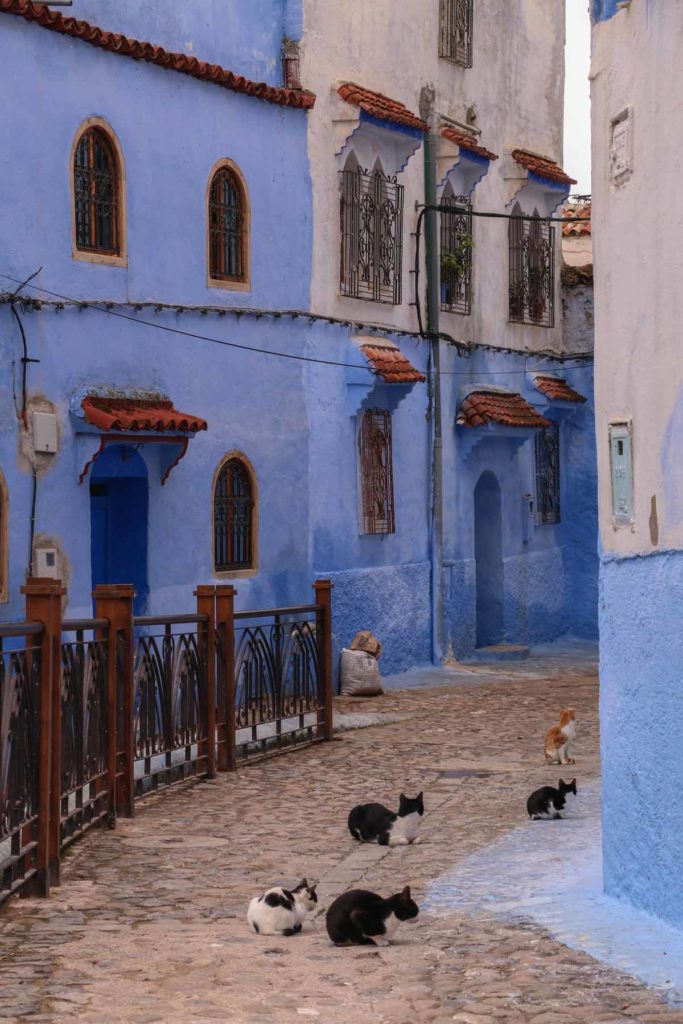

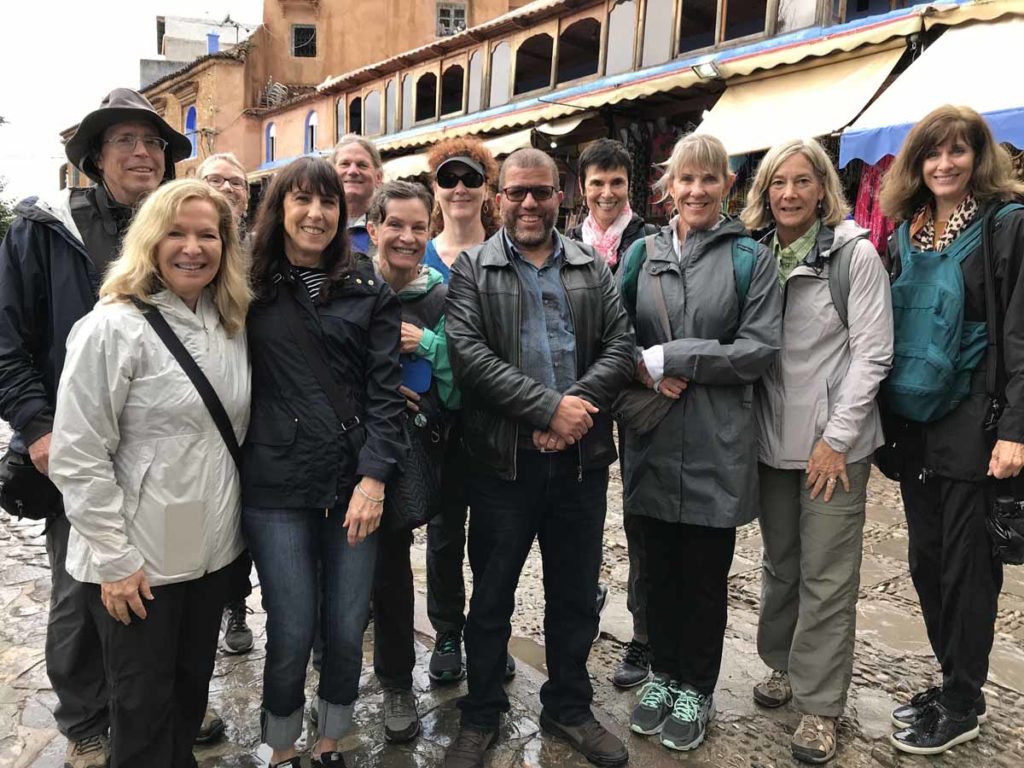
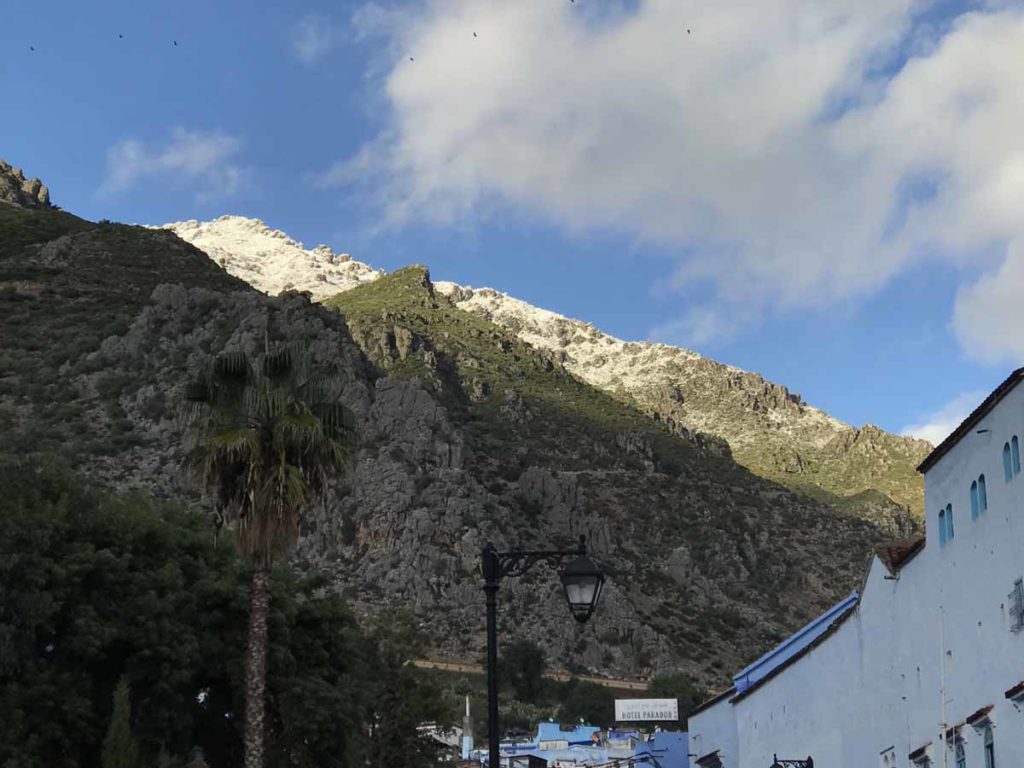

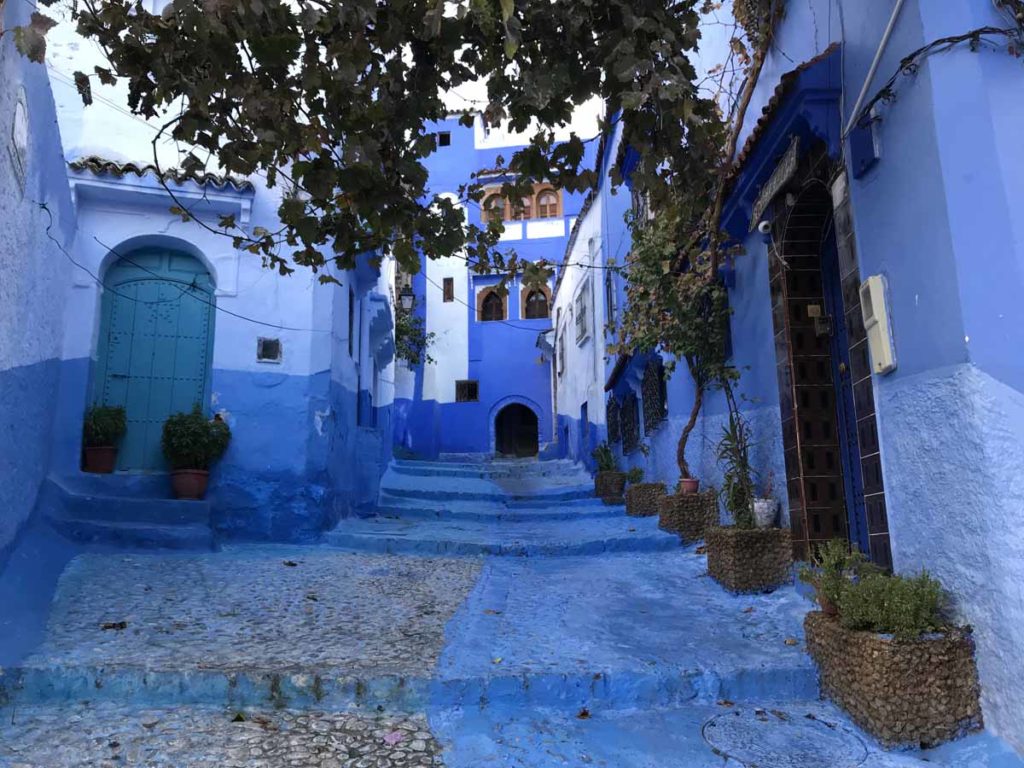


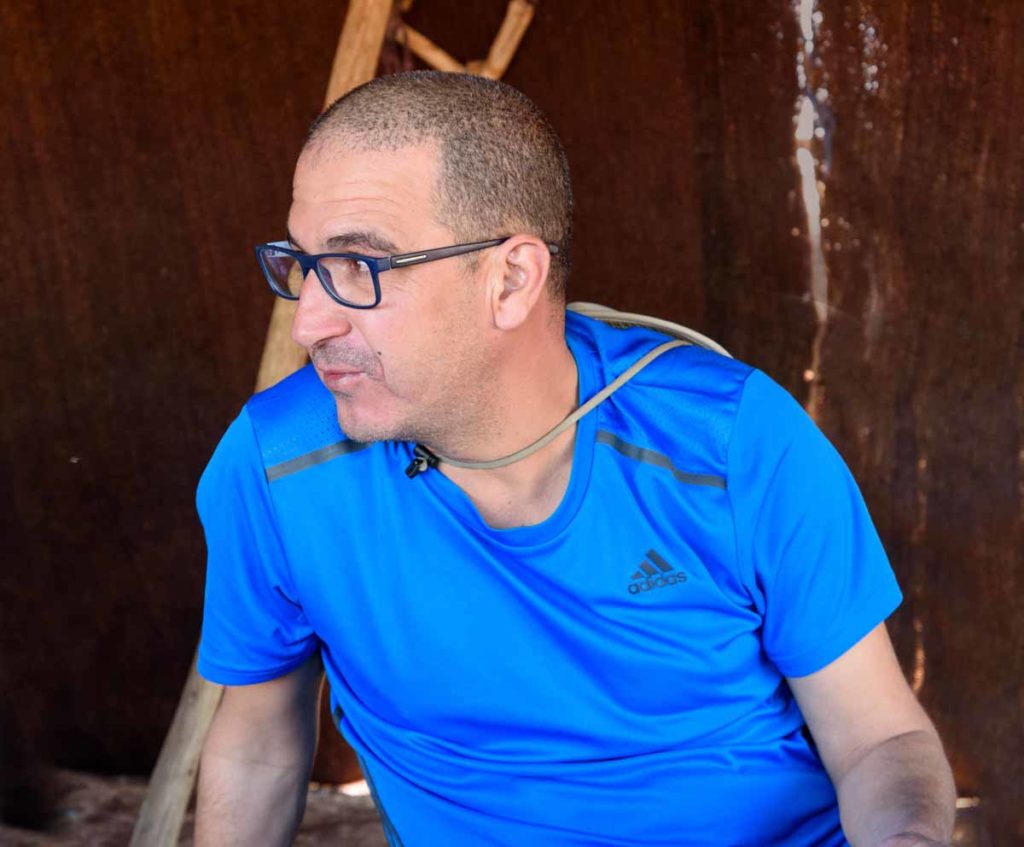



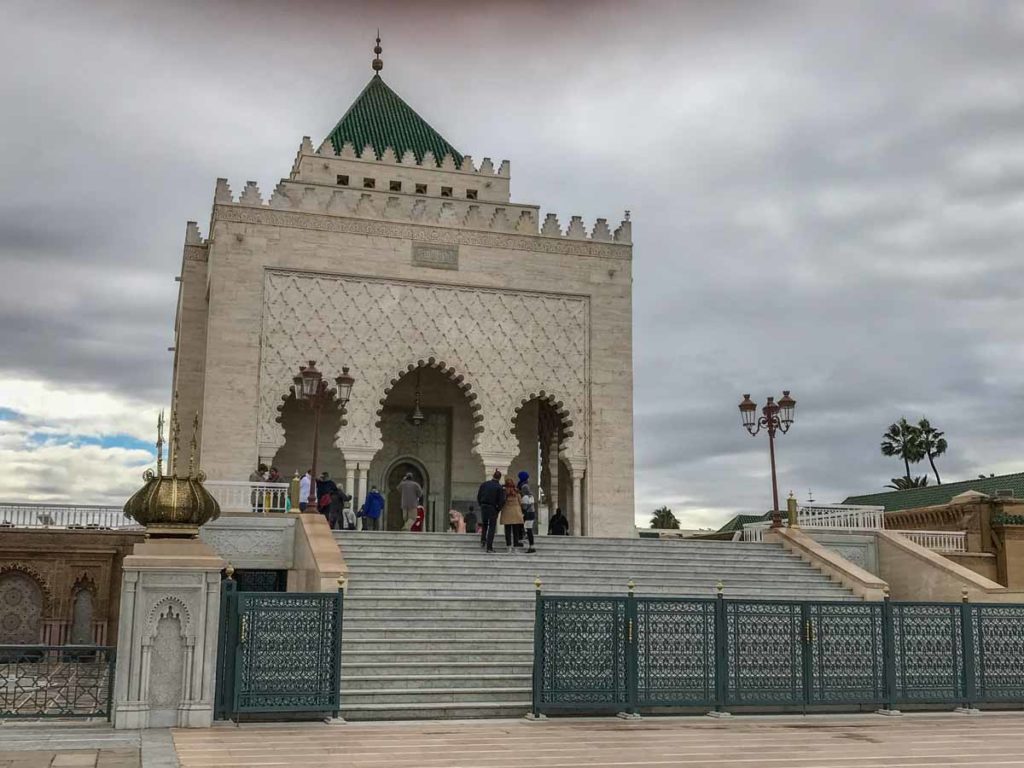
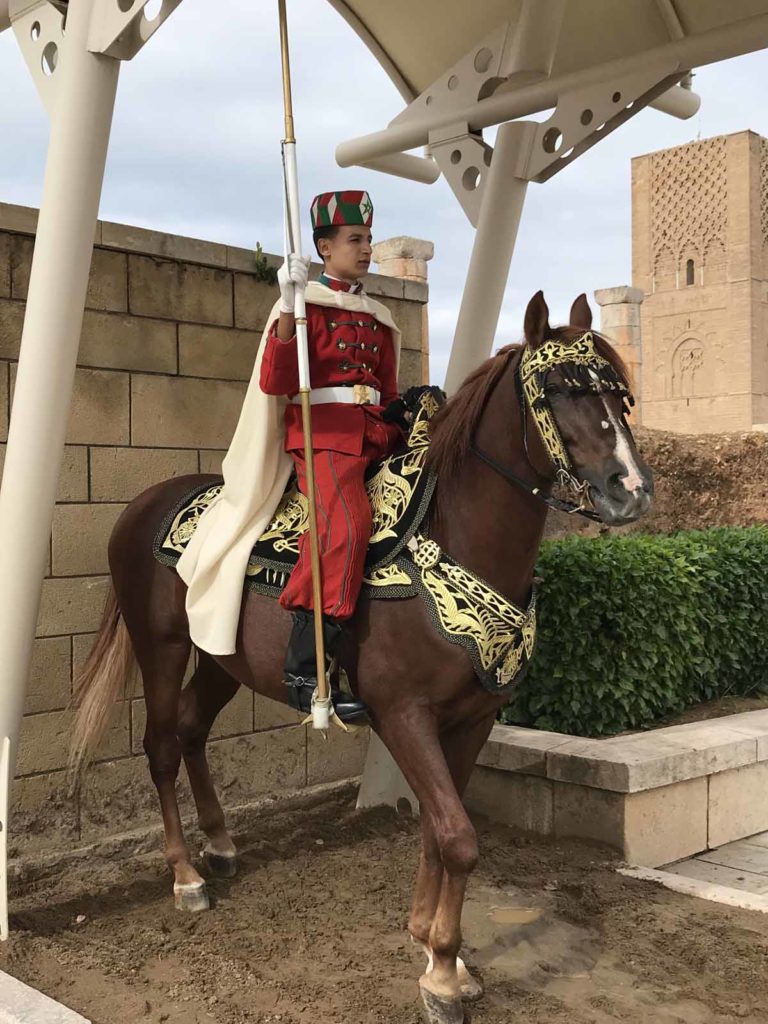
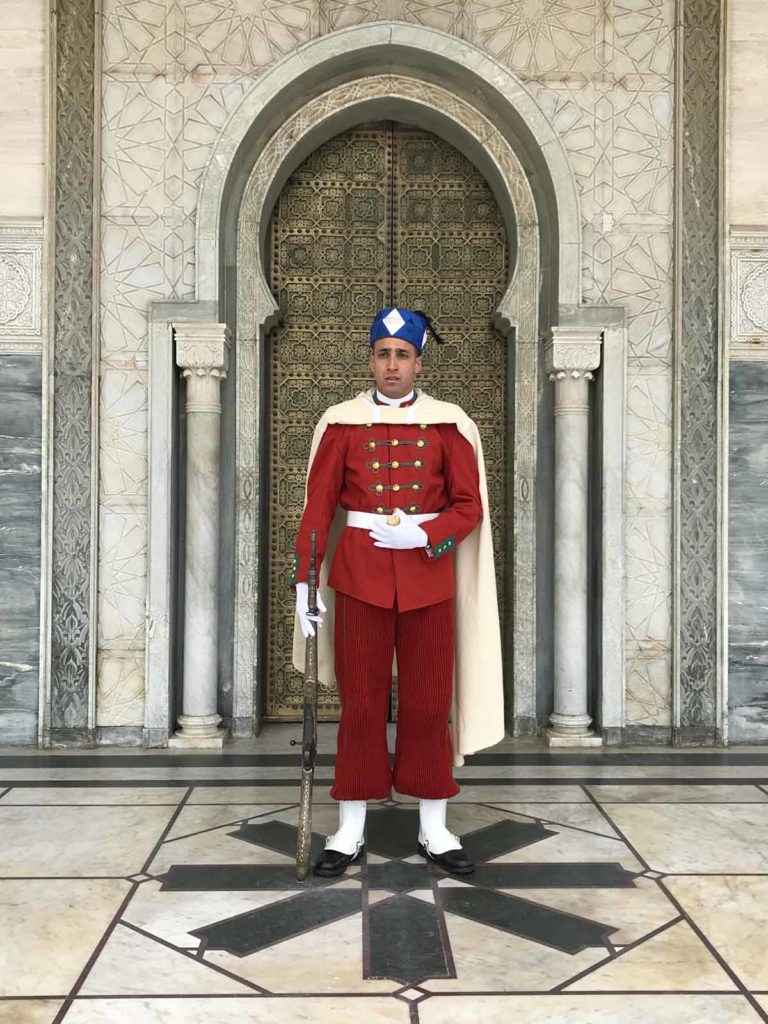






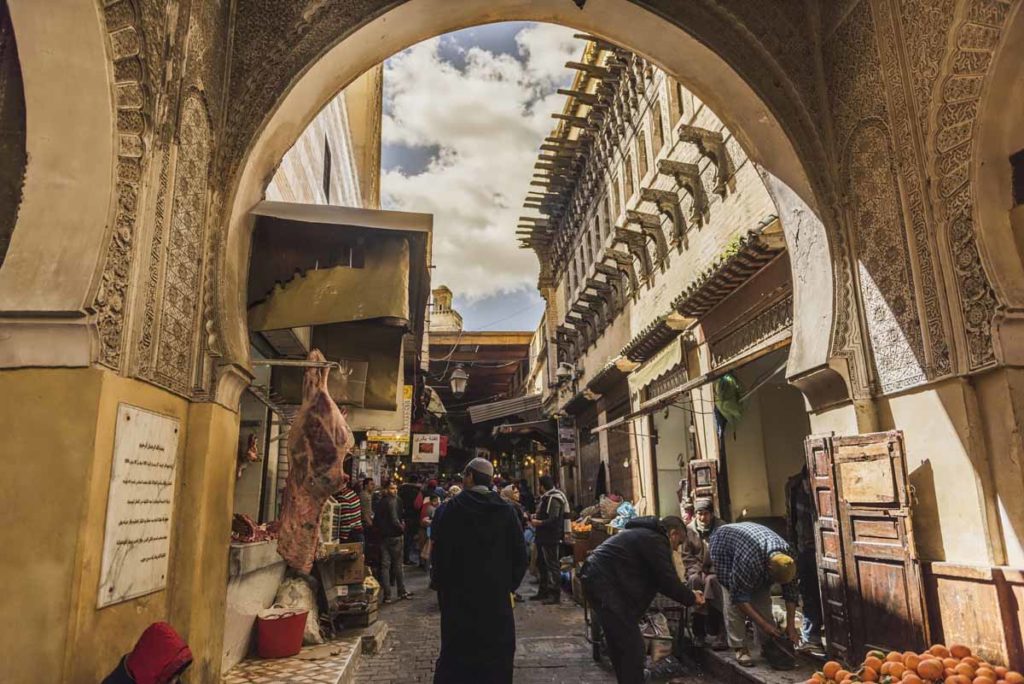


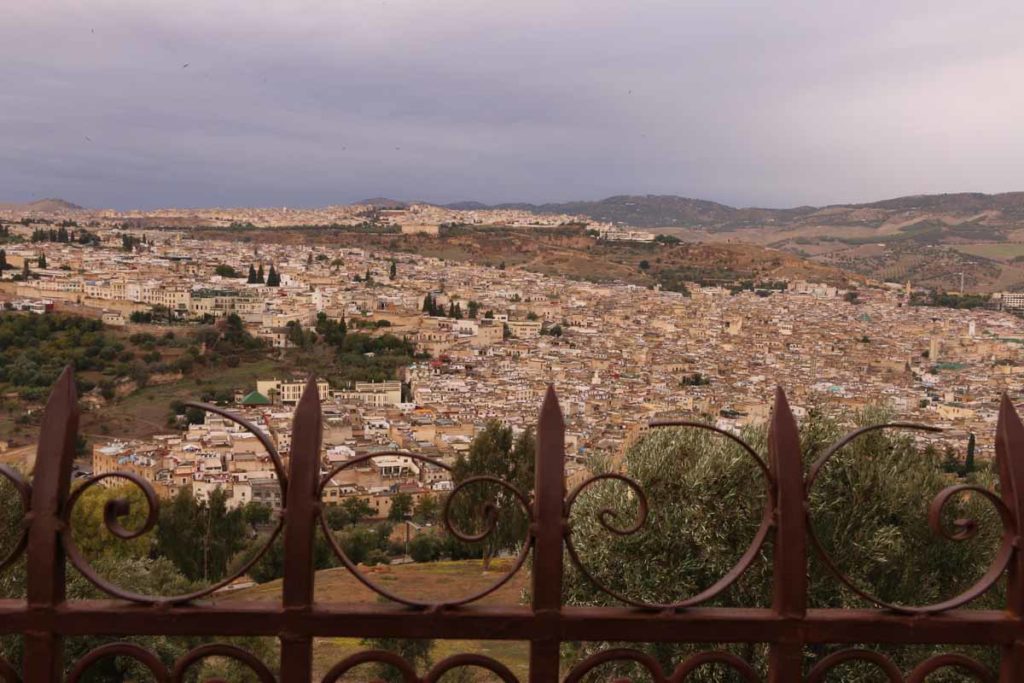









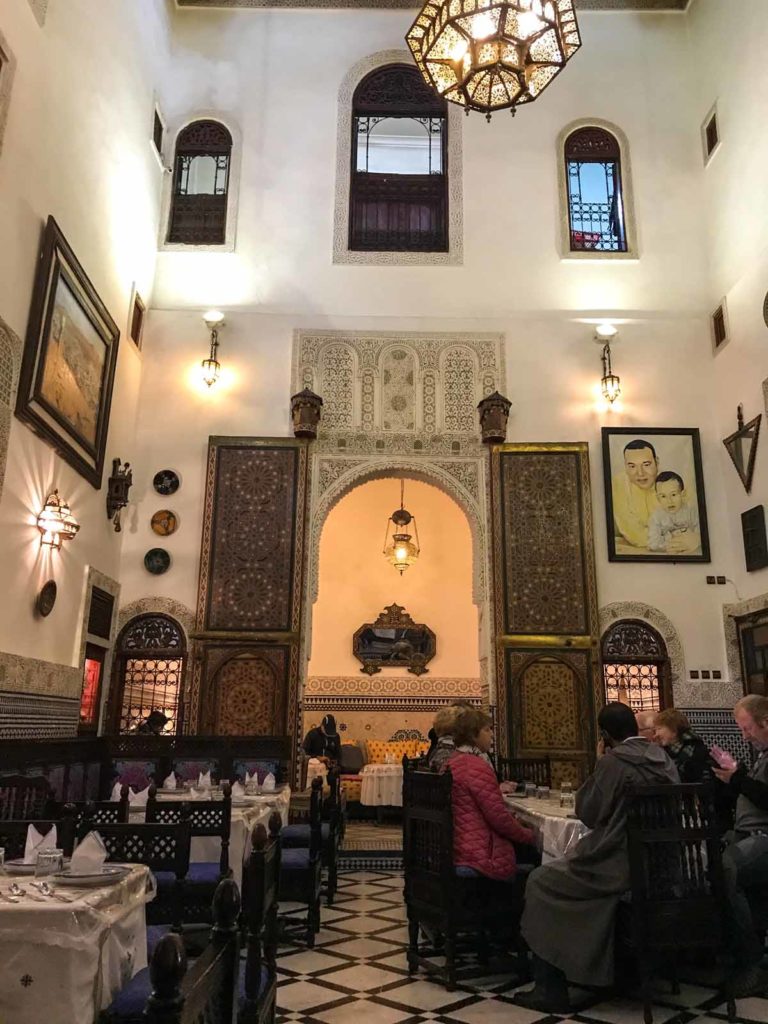



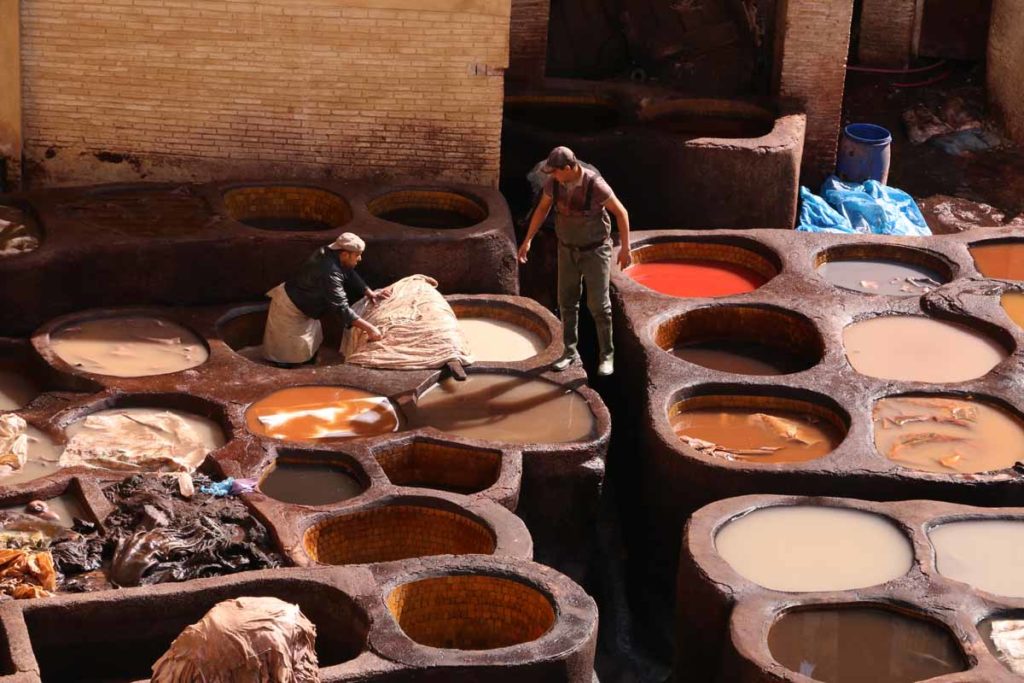


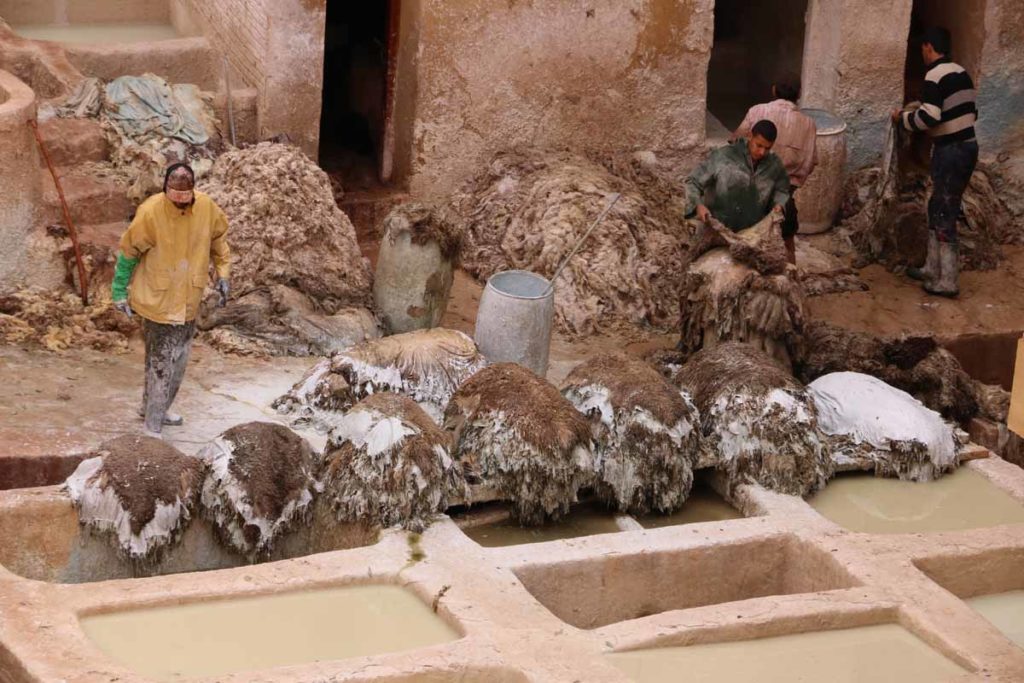
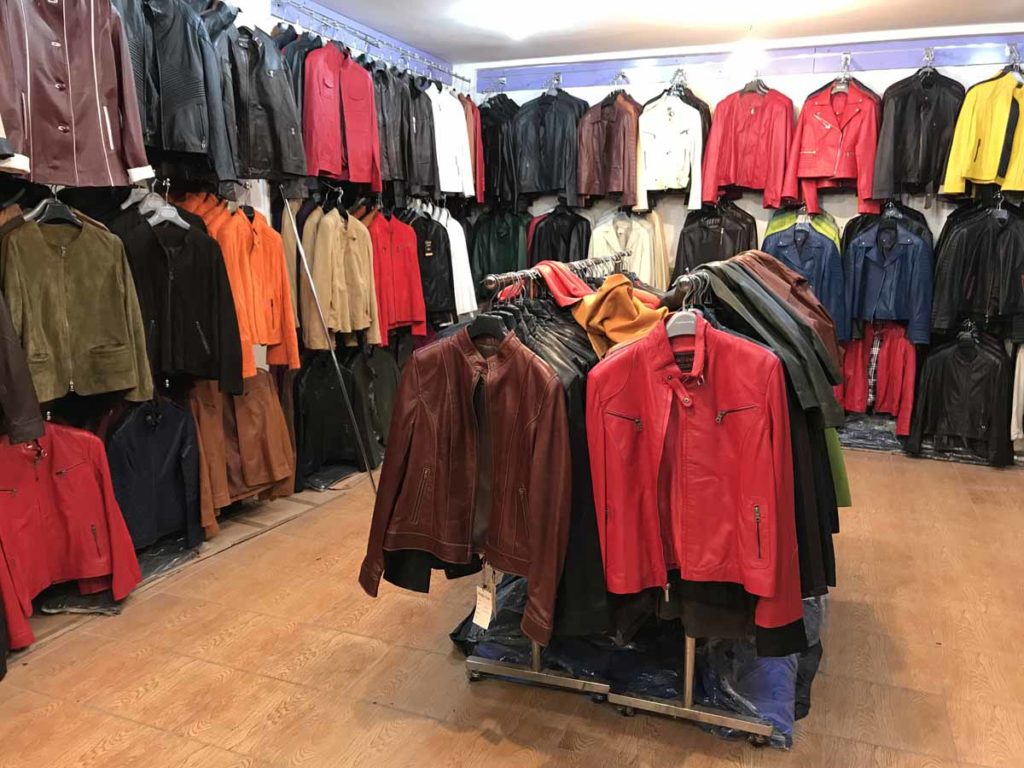



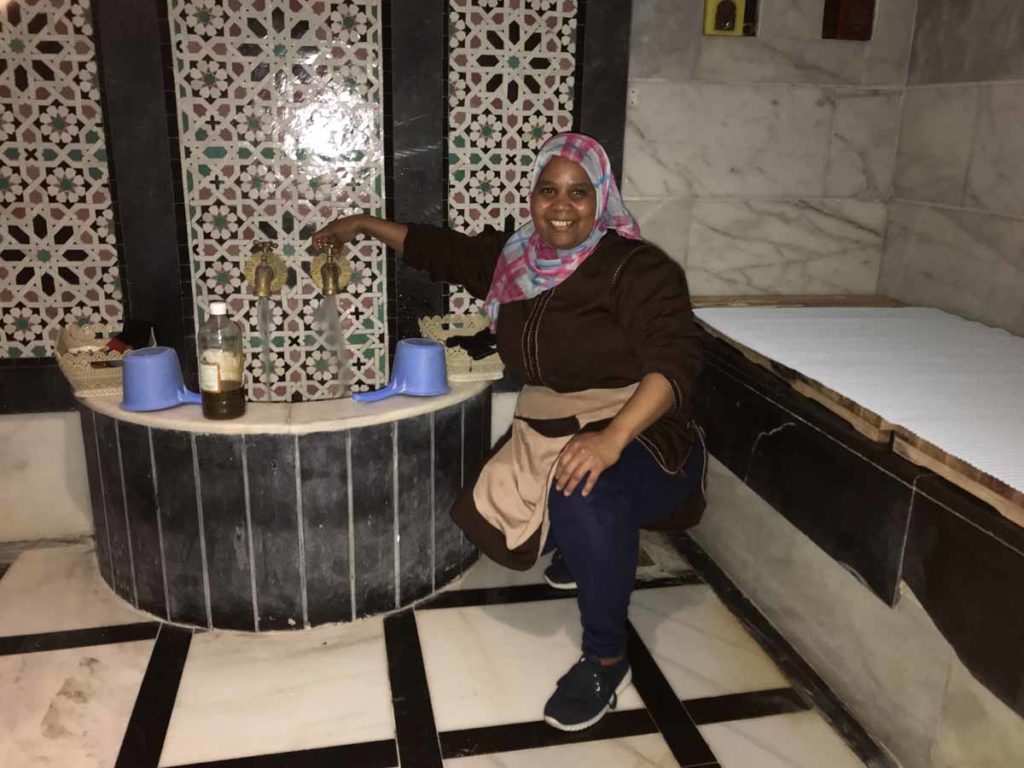













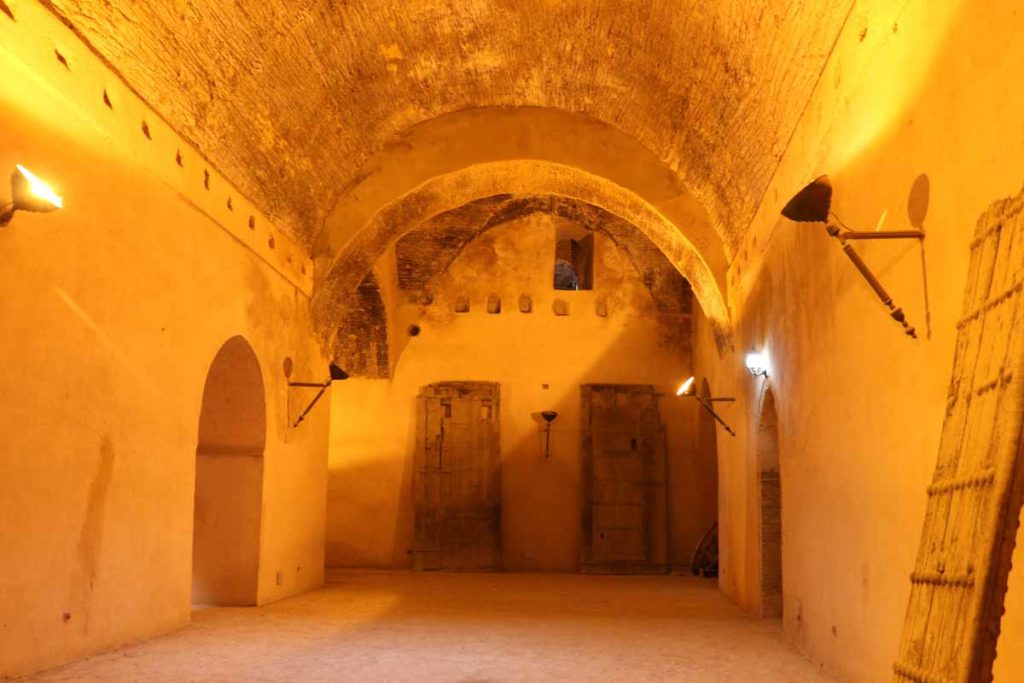





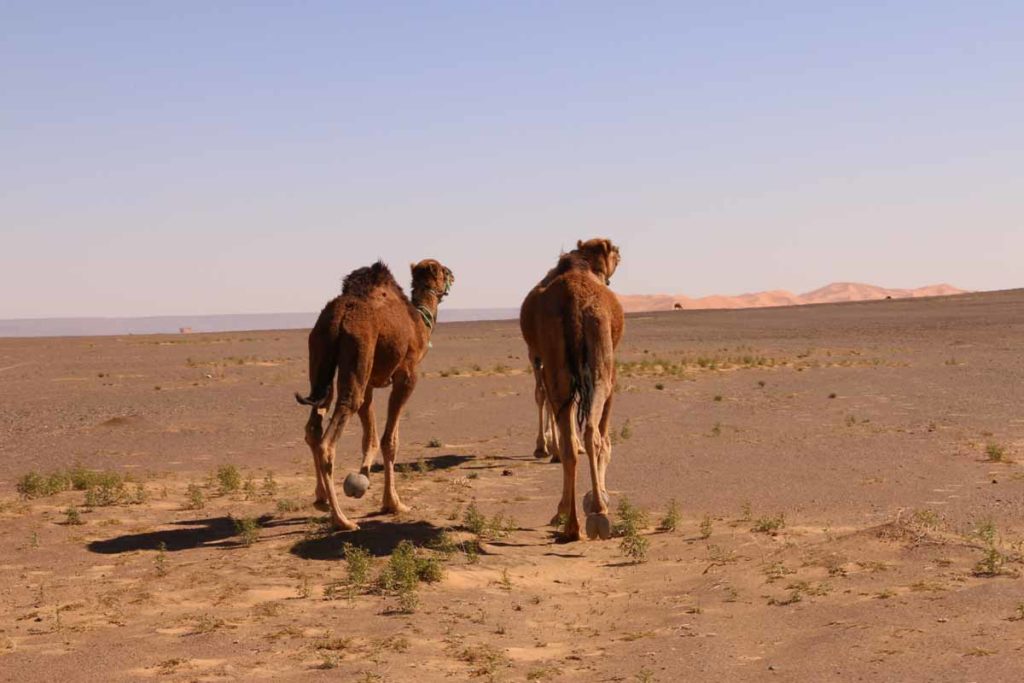



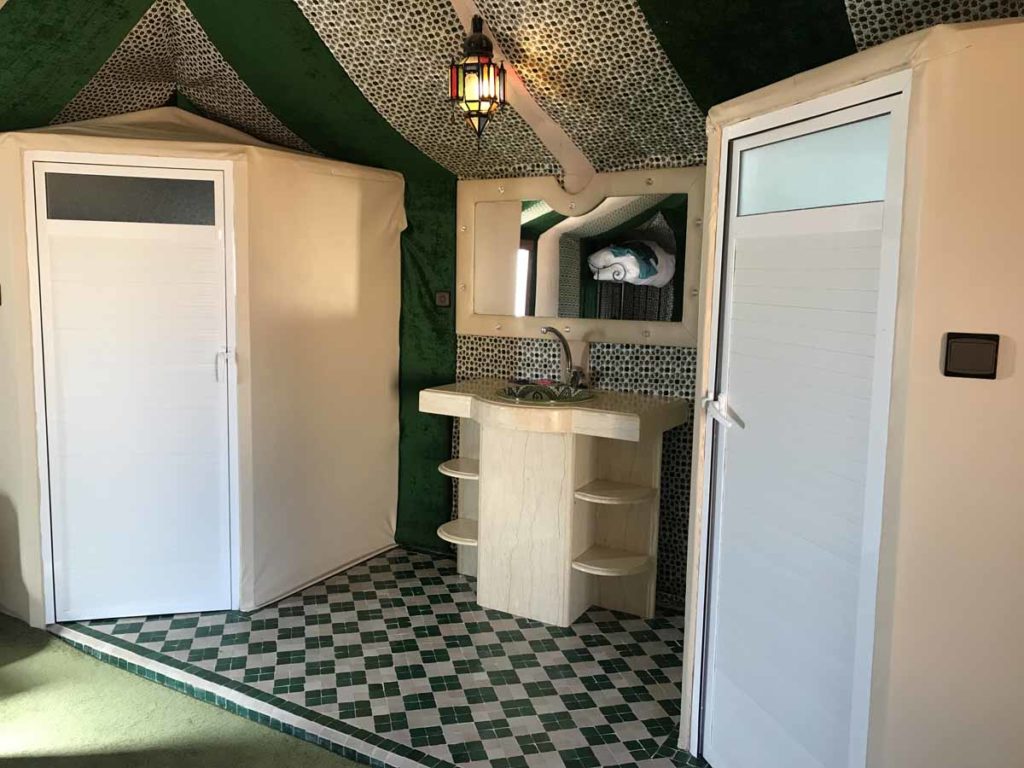
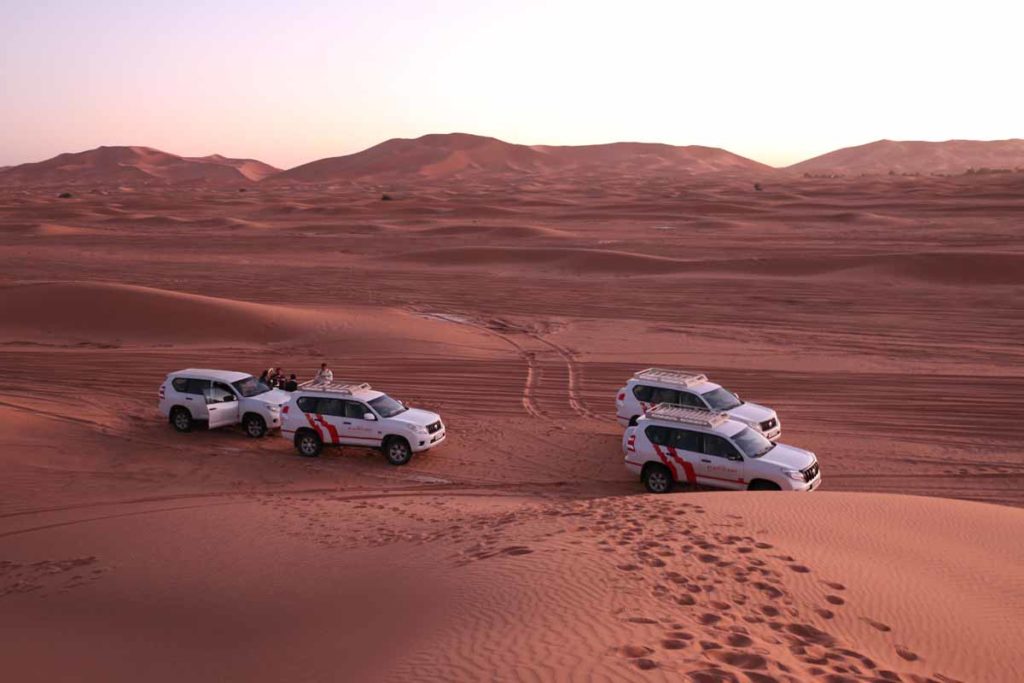









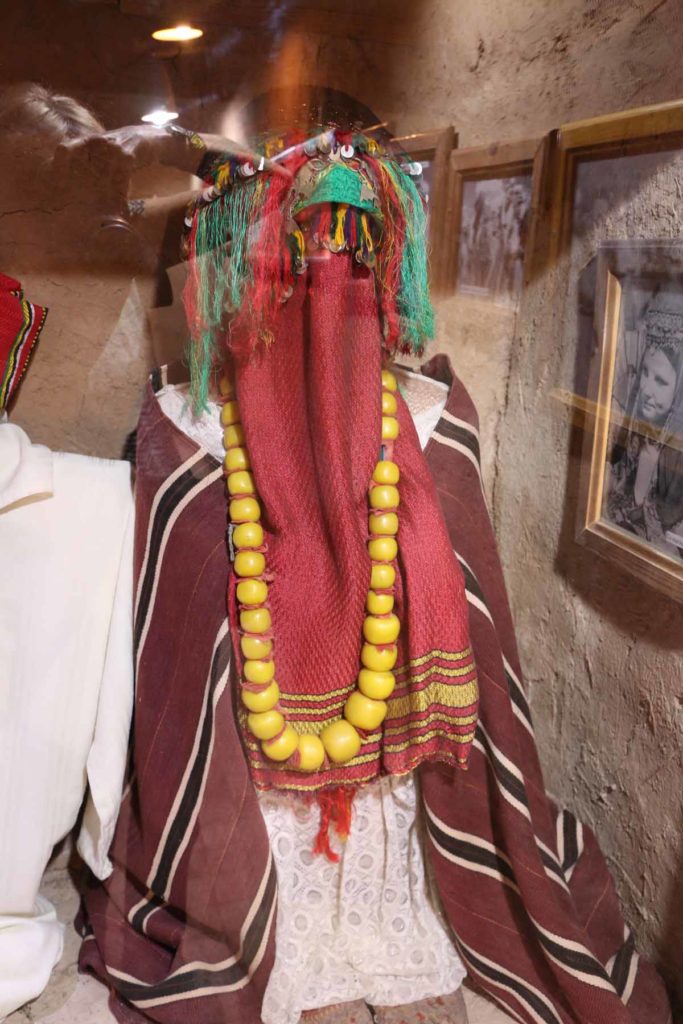




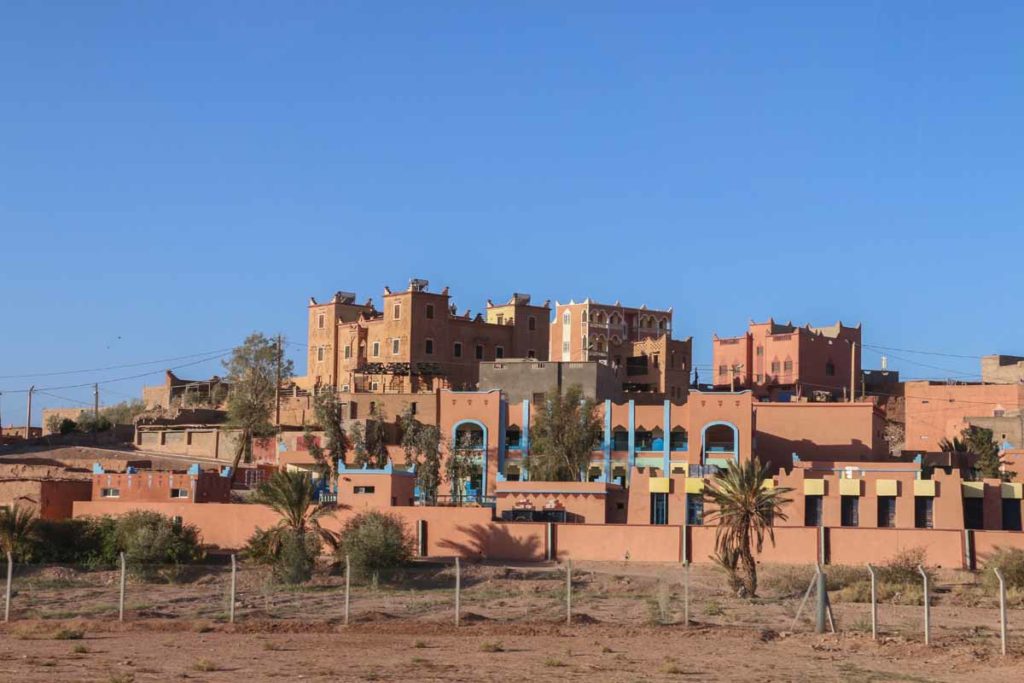












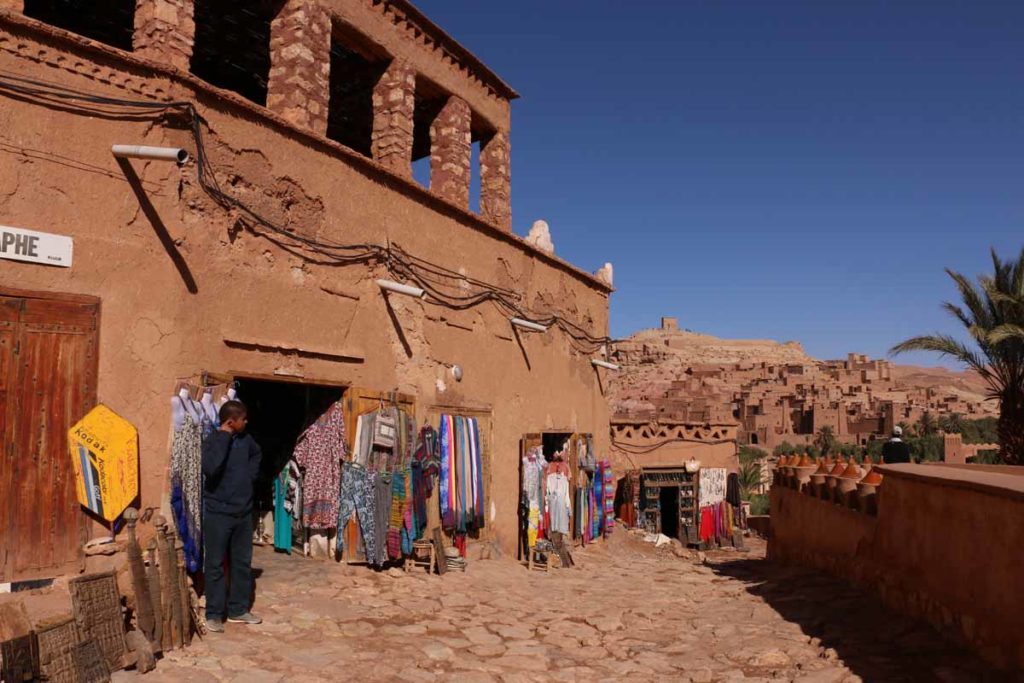







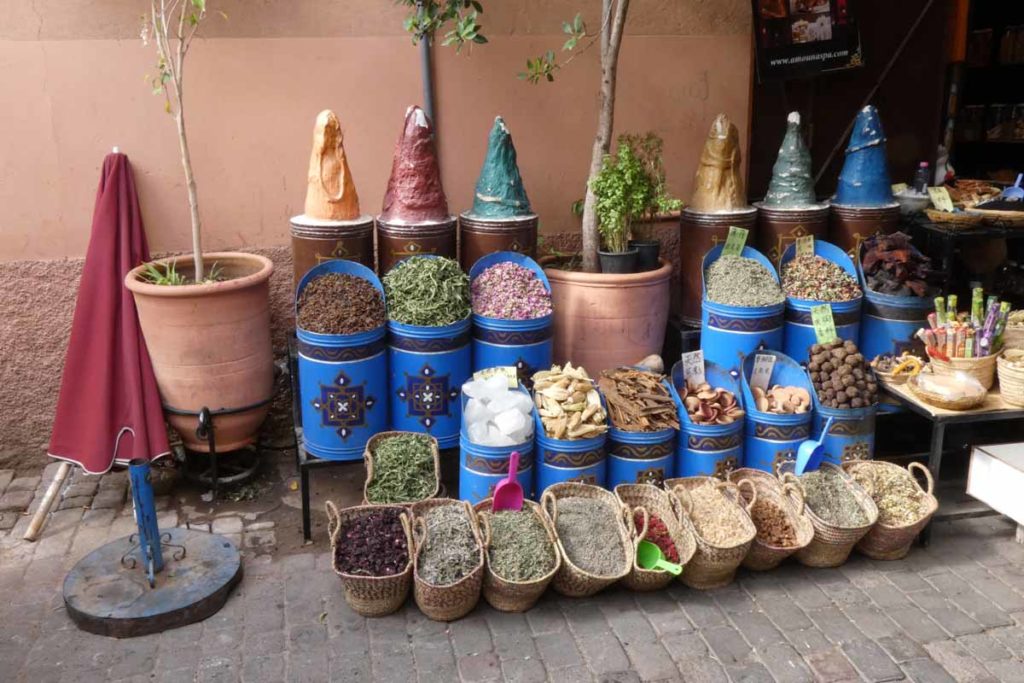
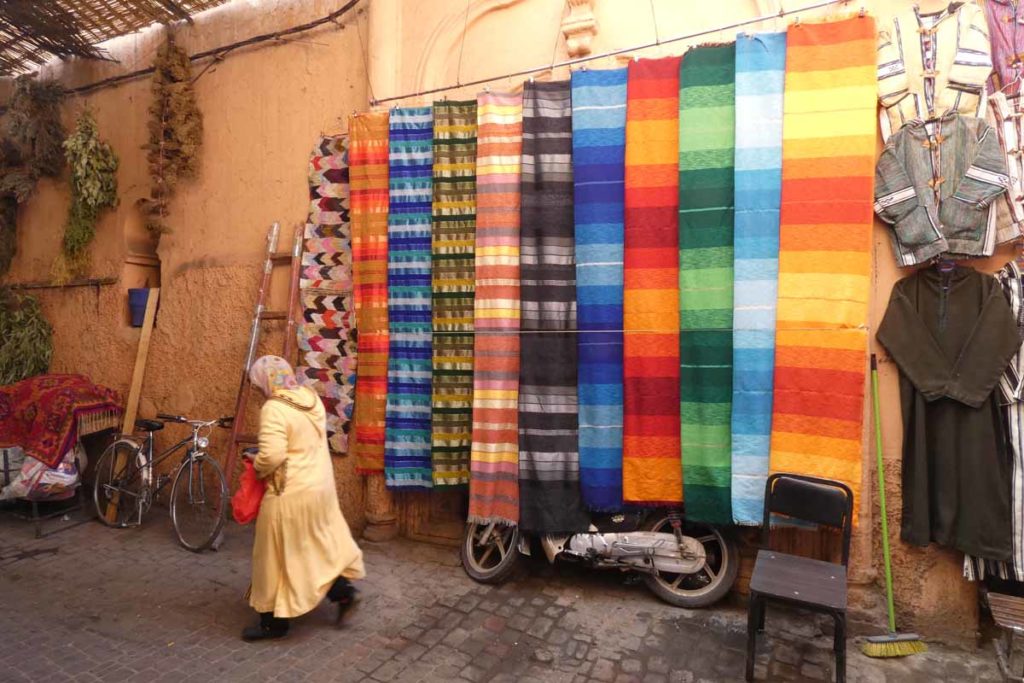




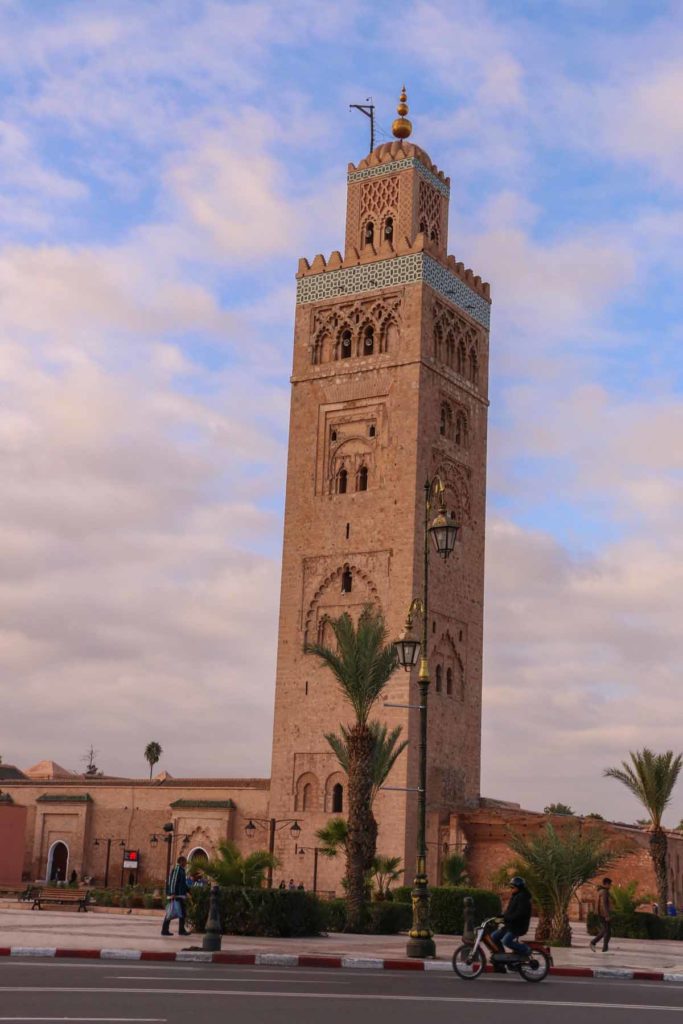
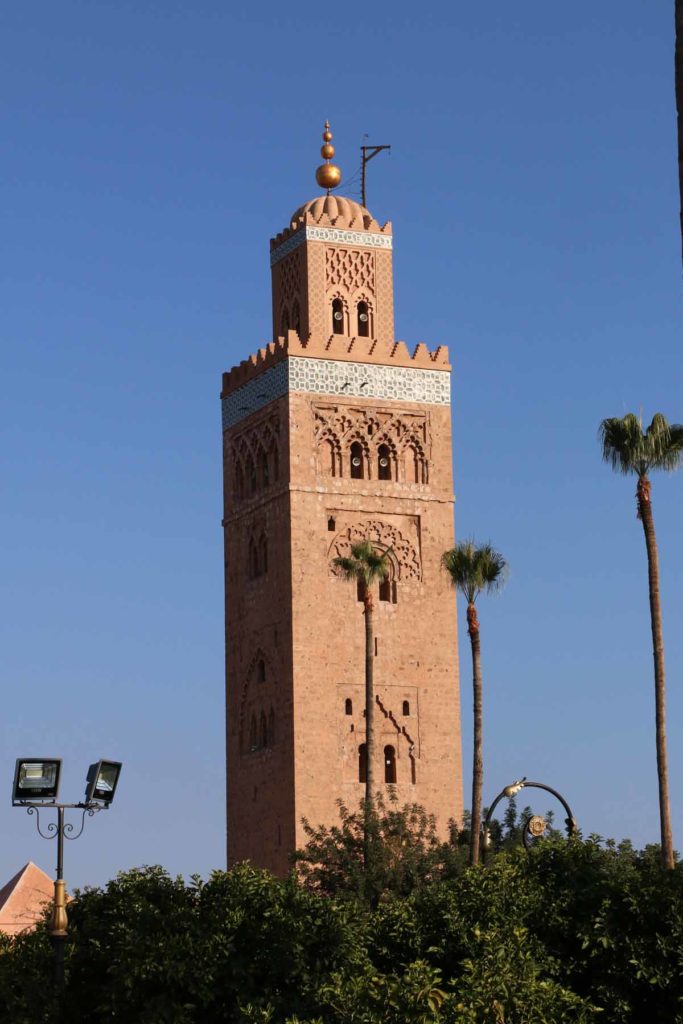

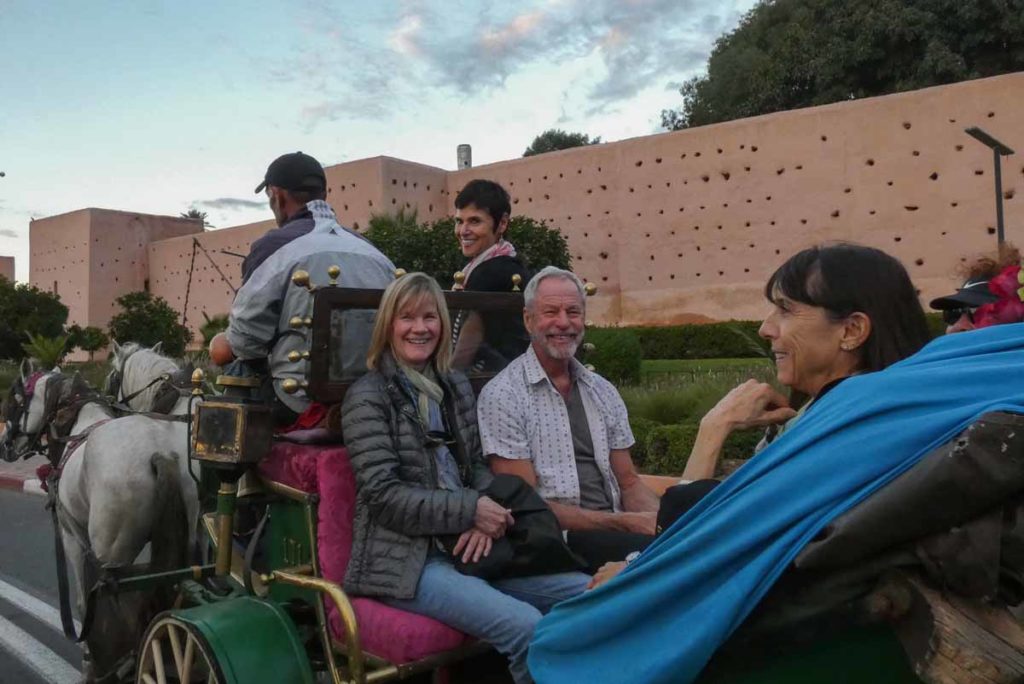


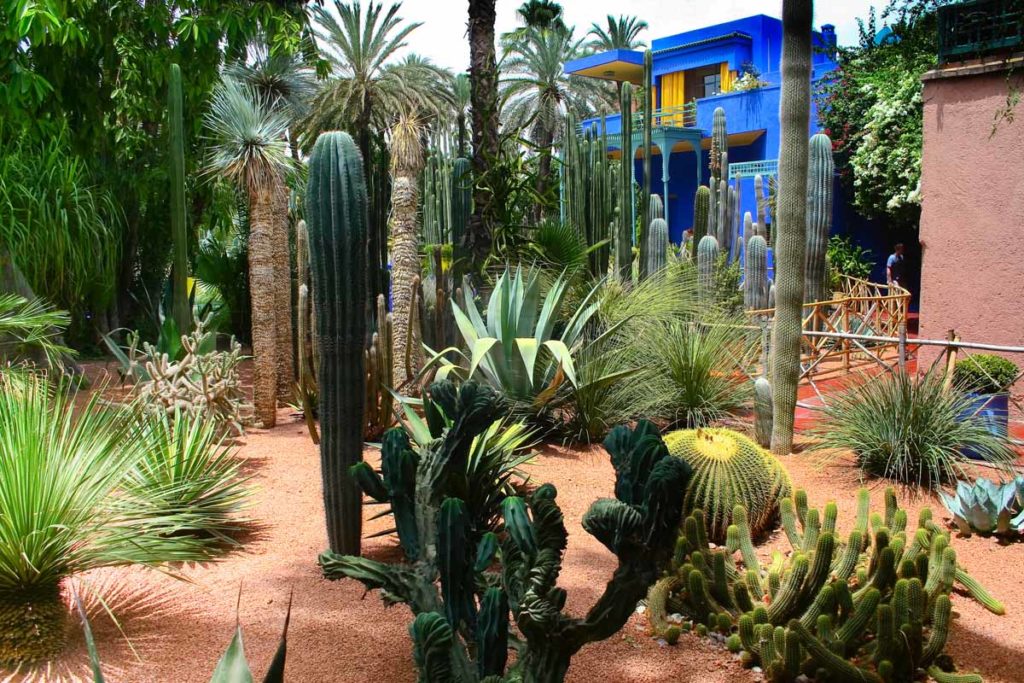

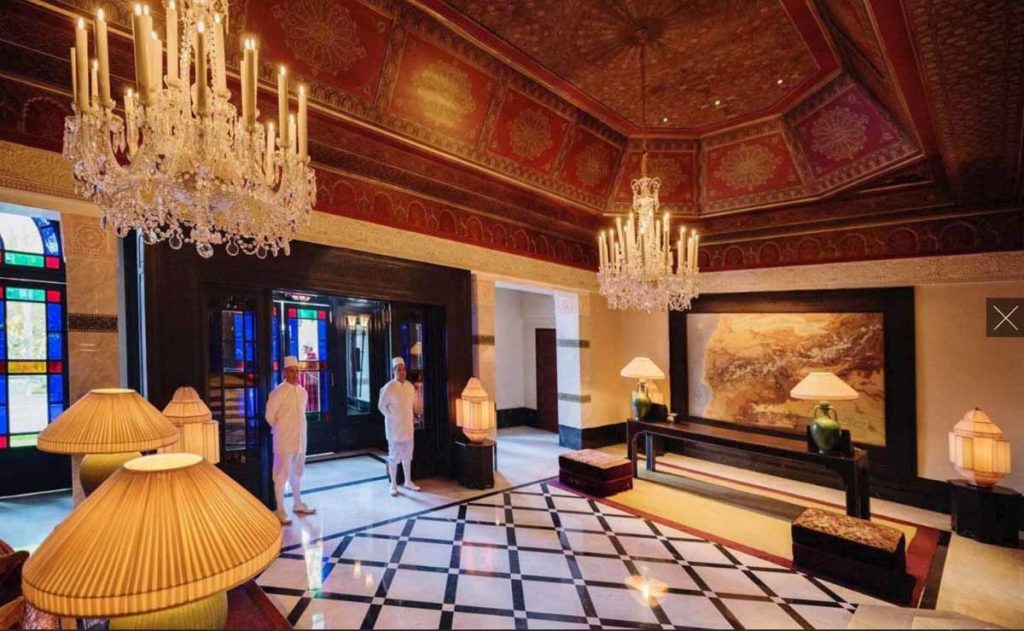


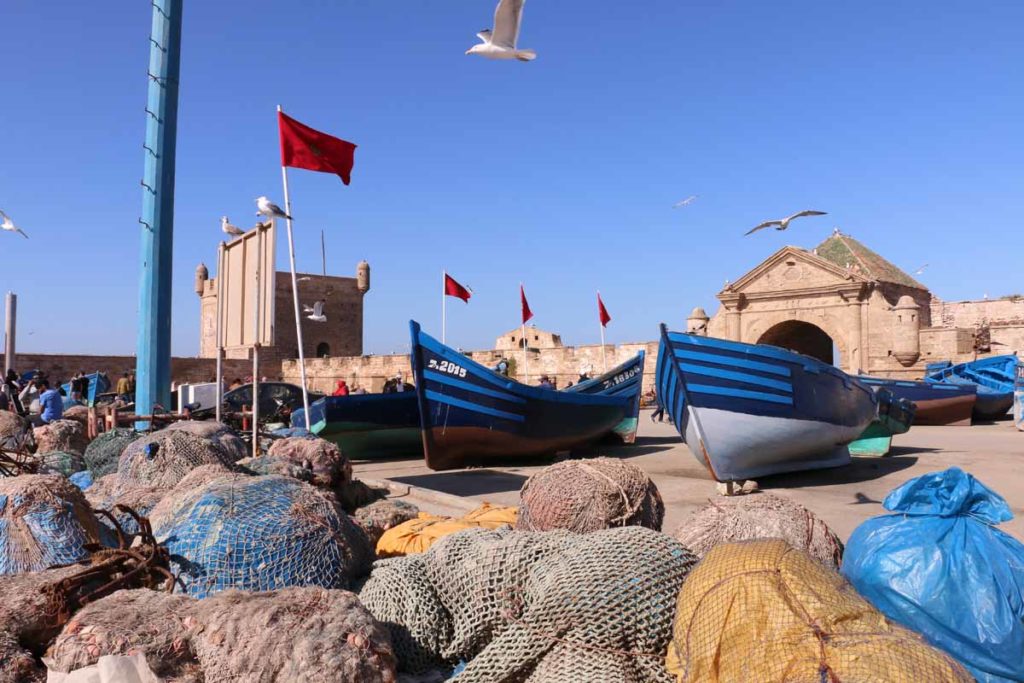




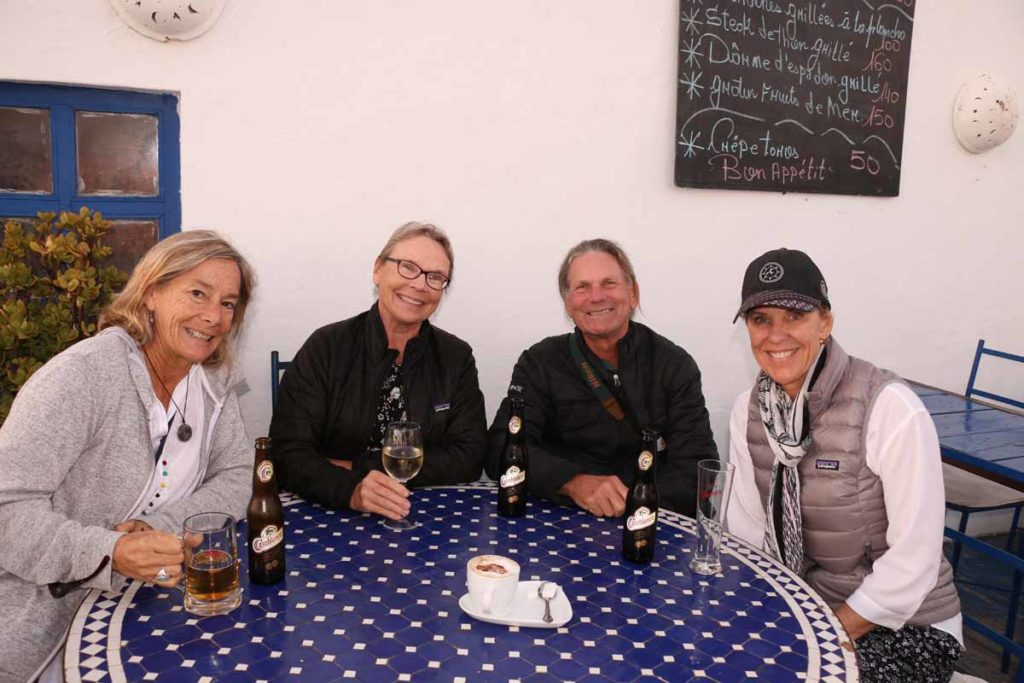
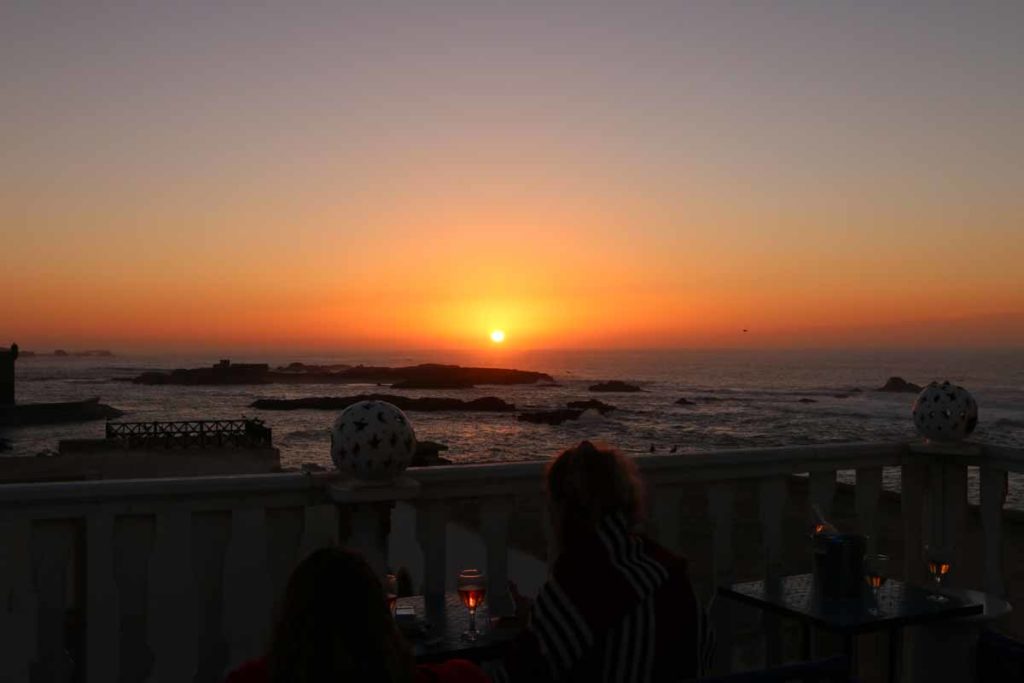
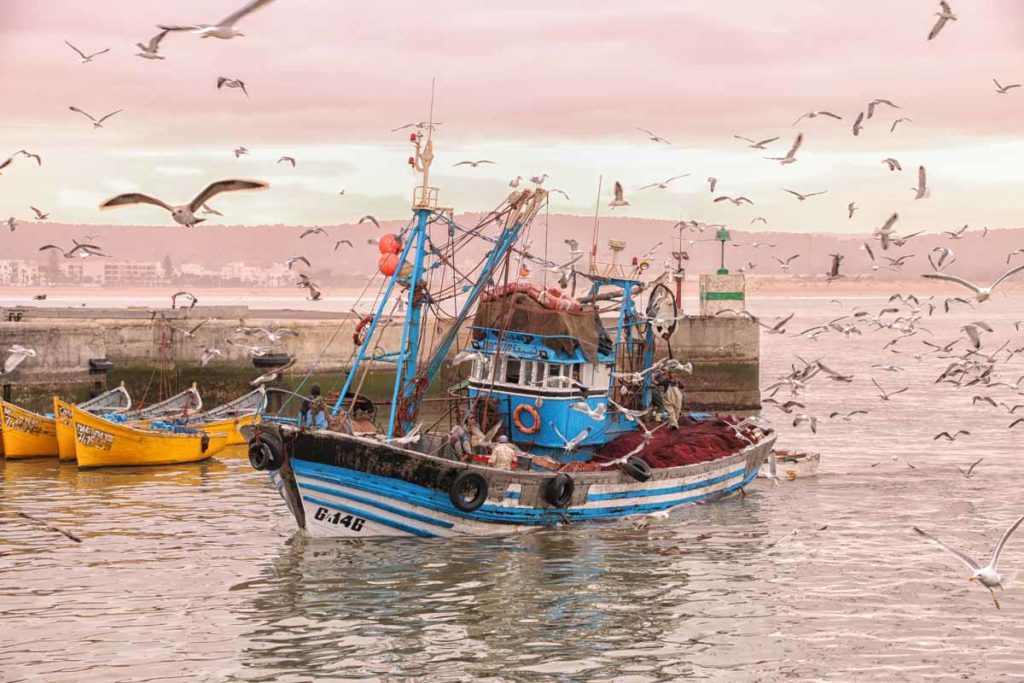

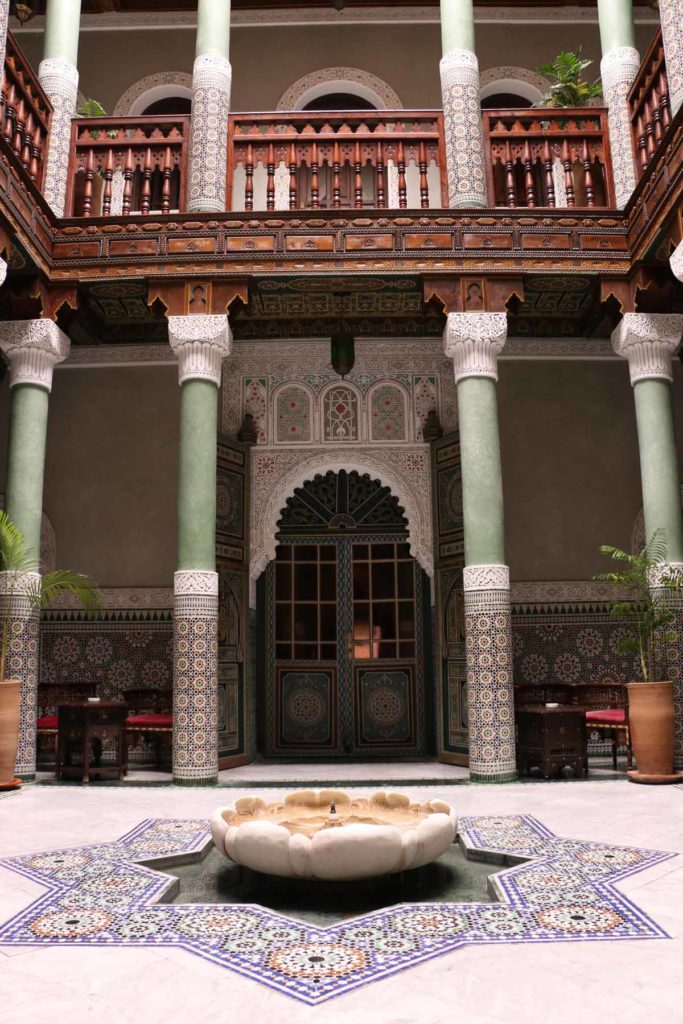

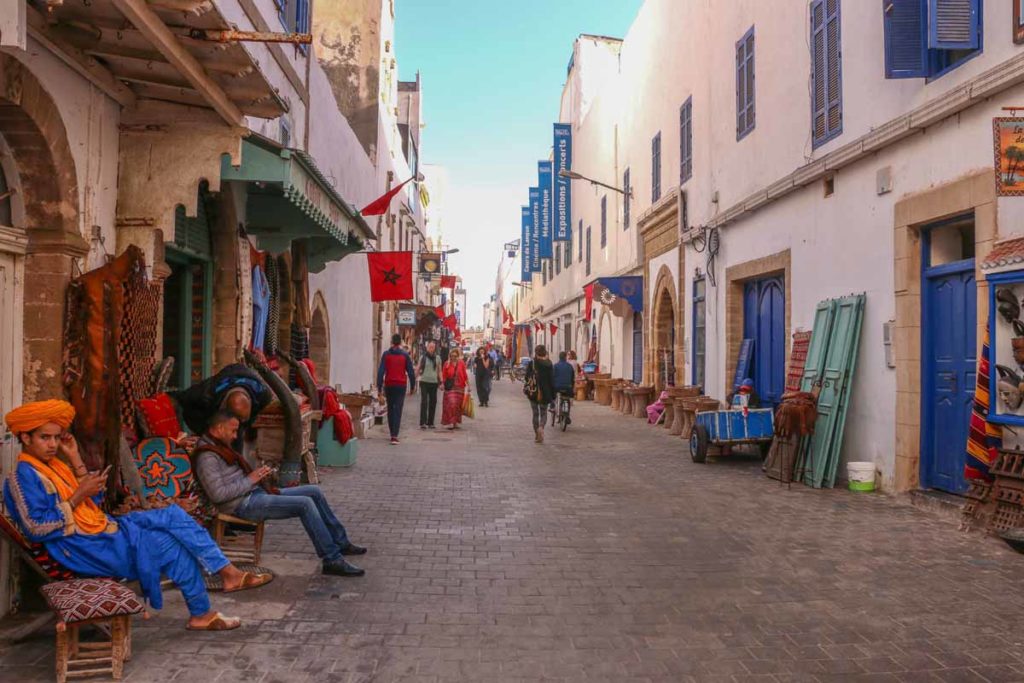



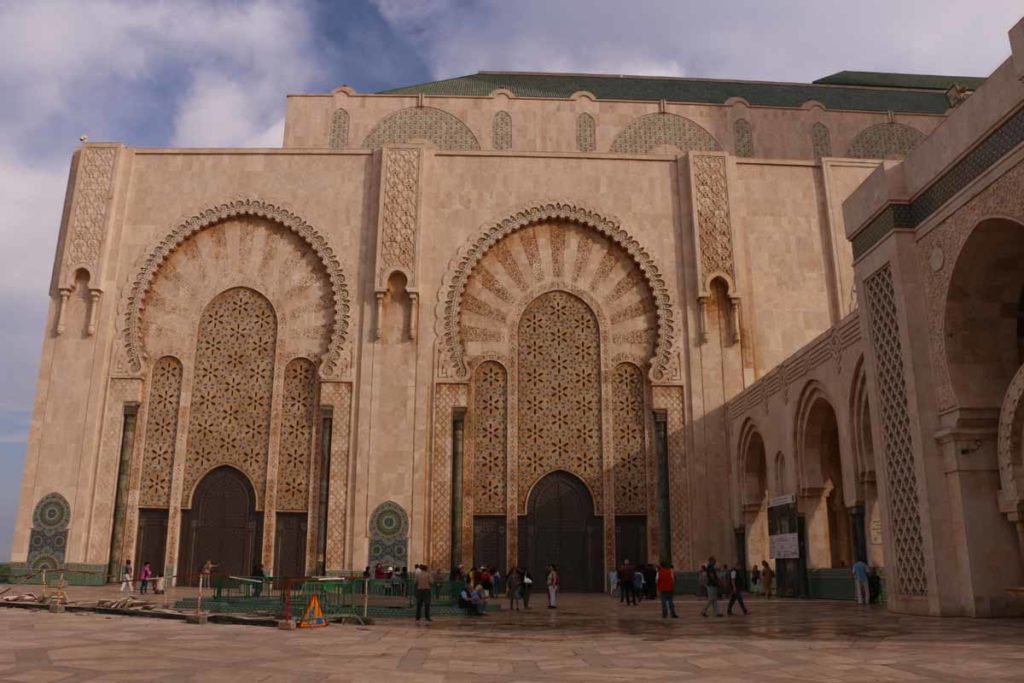


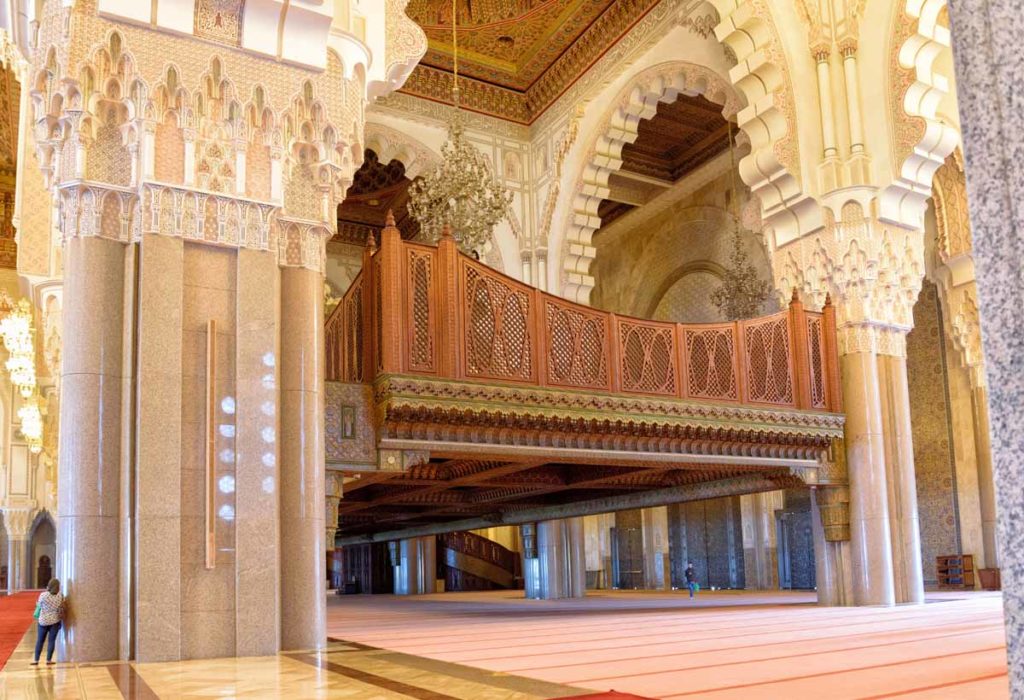
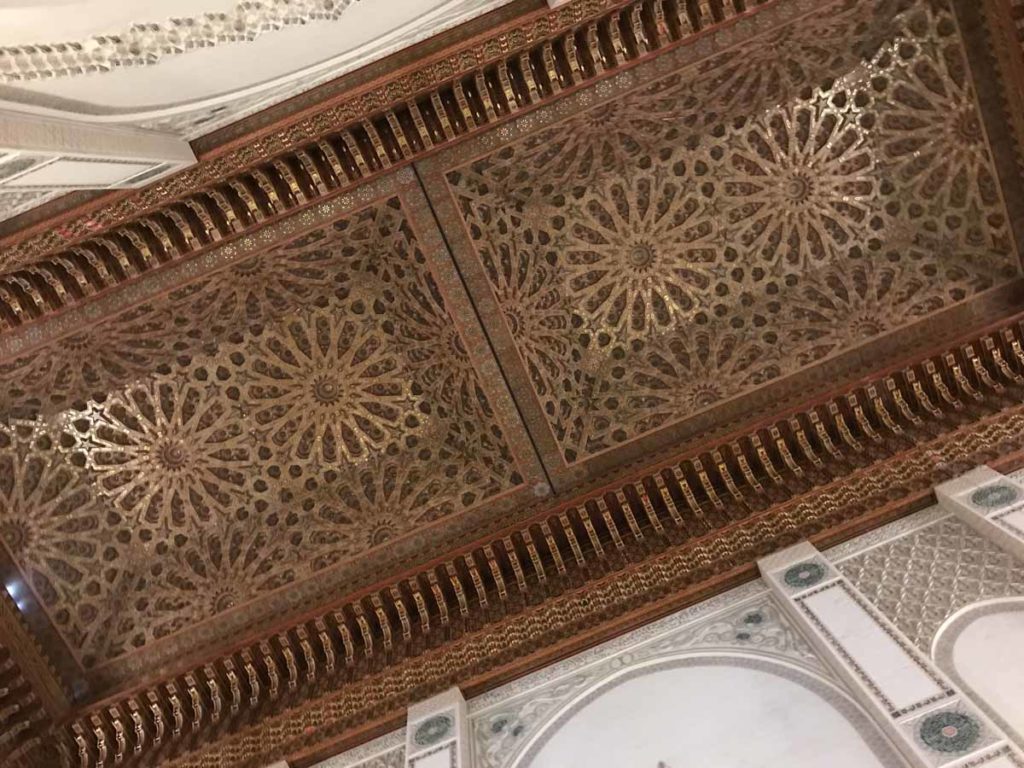


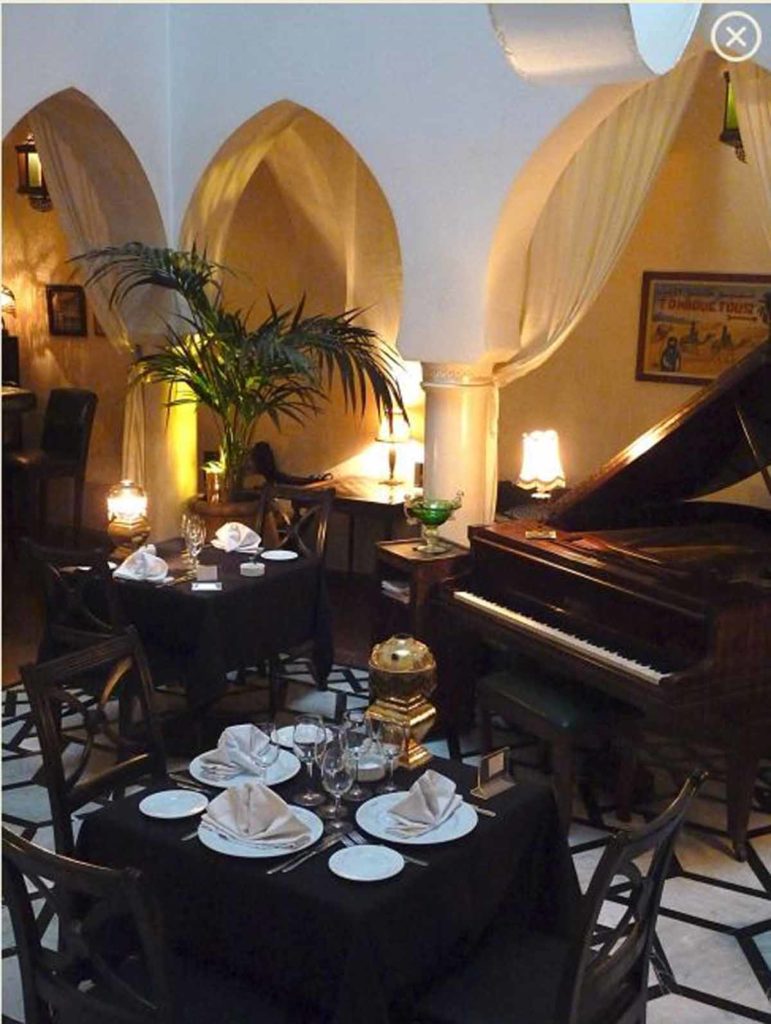




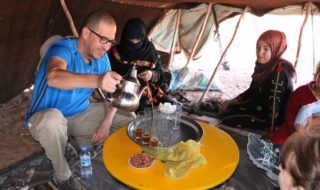


Hi Janet,
It was an amazing trip and your blog brought back many delightful memories. The people were warm and welcoming, architecture and history, a revelation and the food delicious!!! Even our post pick-pocketing visit to the Police Station in Marrakesh would not keep me from recommending Morocco as a ‘must go’ destination. I say ‘go now before word gets out’!! LOL
Thanks for your sharing all your travel experiences and great travel tips!!!
Thanks so much, JoAnn for your lovely words about Morocco & our wonderful trip. You are so right on! And, it was so much fun to share this grand adventure with you. I hope many other people will have the opportunity to visit Morocco!
Morocco is full of amazing places! I had have a long desire of visiting Chefchaouen – The Blue City.
Thanks, Michael. Yes, the Blue City is an amazing place, like all of Morocco. Hope you’re able to get there very soon!
Oh my, while working on my ‘travel shutterfly’ book I came upon this trip…we just returned from the same OAT Adventure. It was a wonderful trip, as you show us. Great pictures. I think I must ‘join’ to see the other travels and compare notes.
Thanks so much for this ‘site’.
Thank you, Jeanine and you’re most welcome! I’m very excited that you have experienced the same great OAT Morocco trip. Morocco really is a special country and OAT’s tour & itinerary couldn’t be better. Keep up the adventurous travels!
Morocco is really a fairy-tale land; heaven you will never forget. I am going on my 3rd holiday and I can’t get there fast enough.
Totally understand, Sarah. Yes, Morocco is a magical place and a great place for travelers!